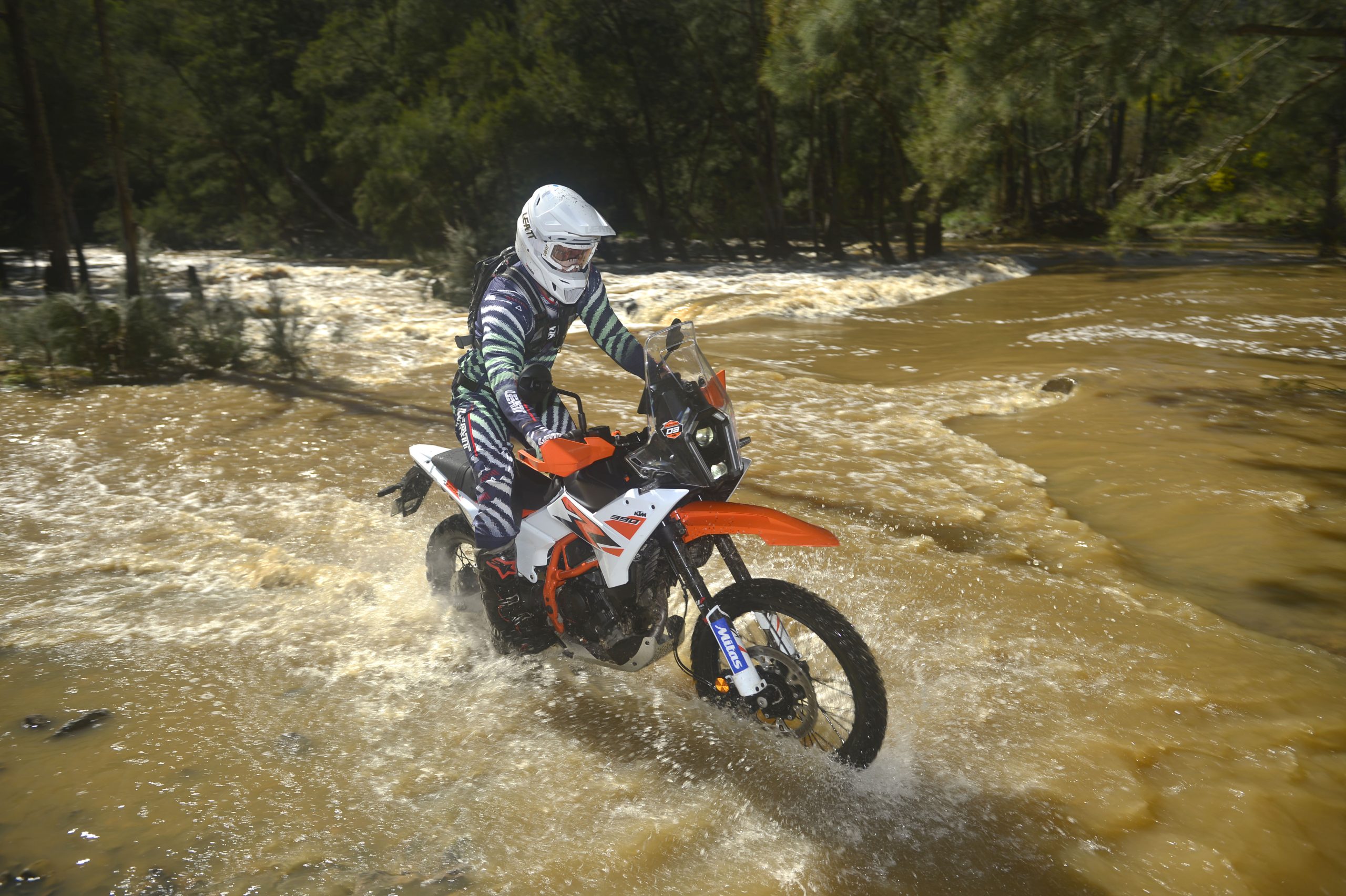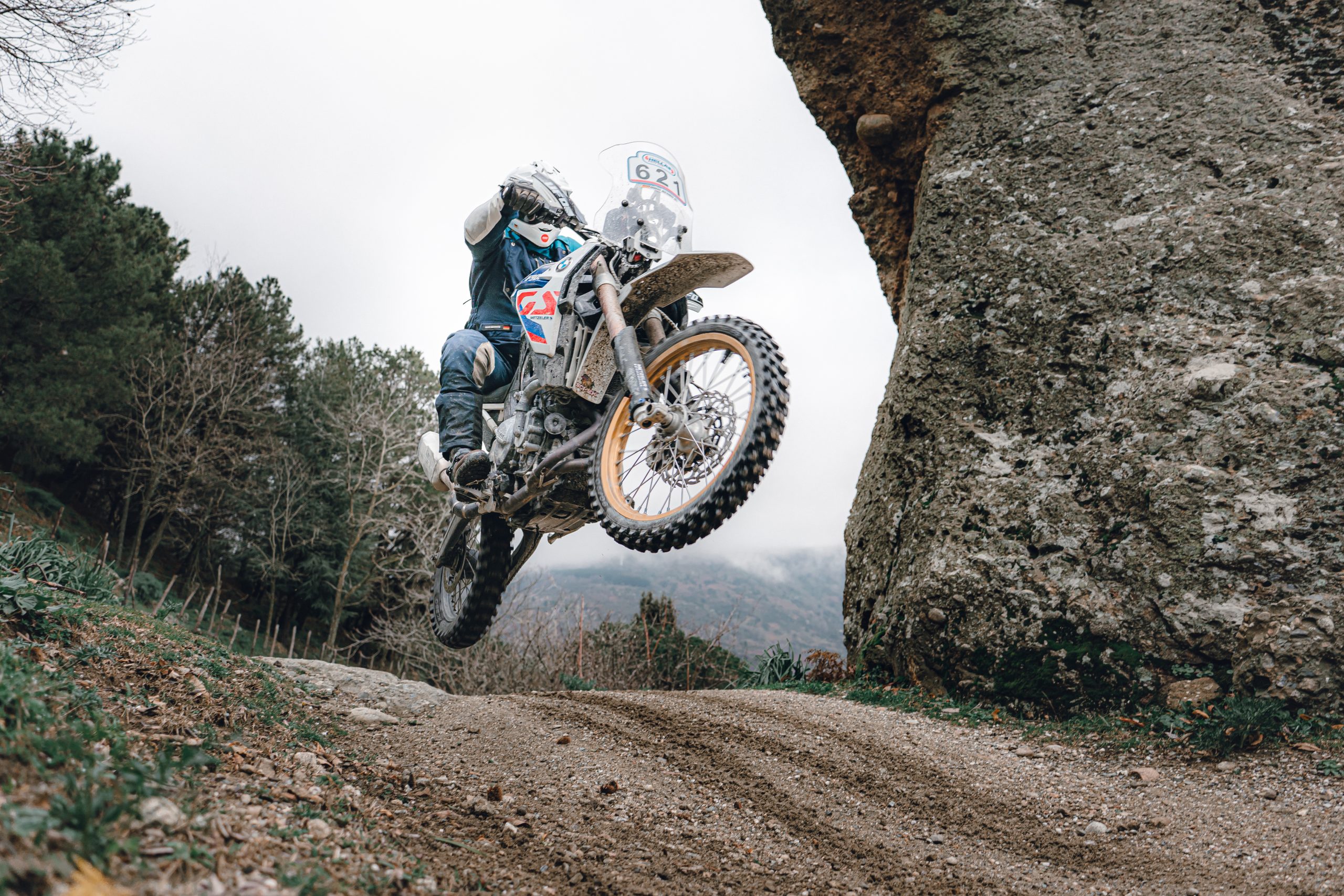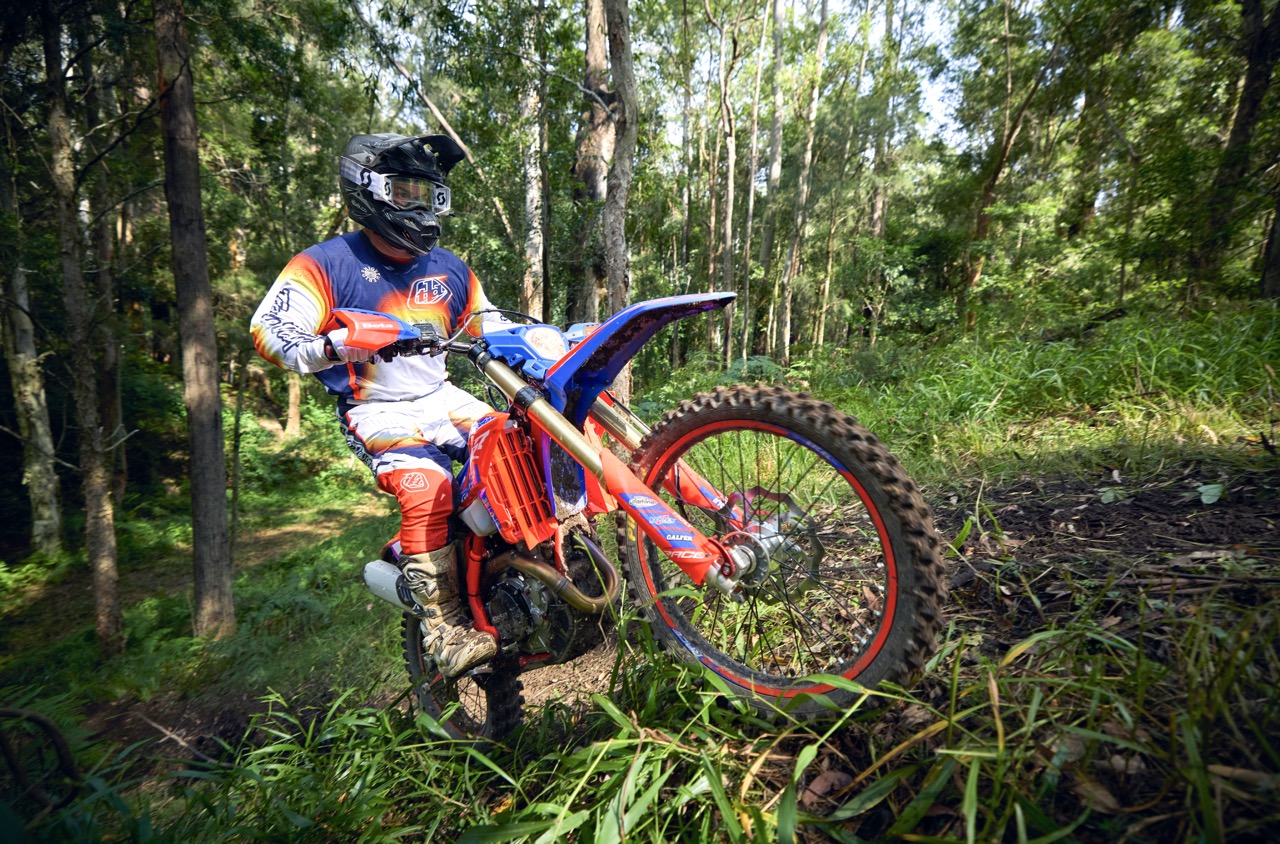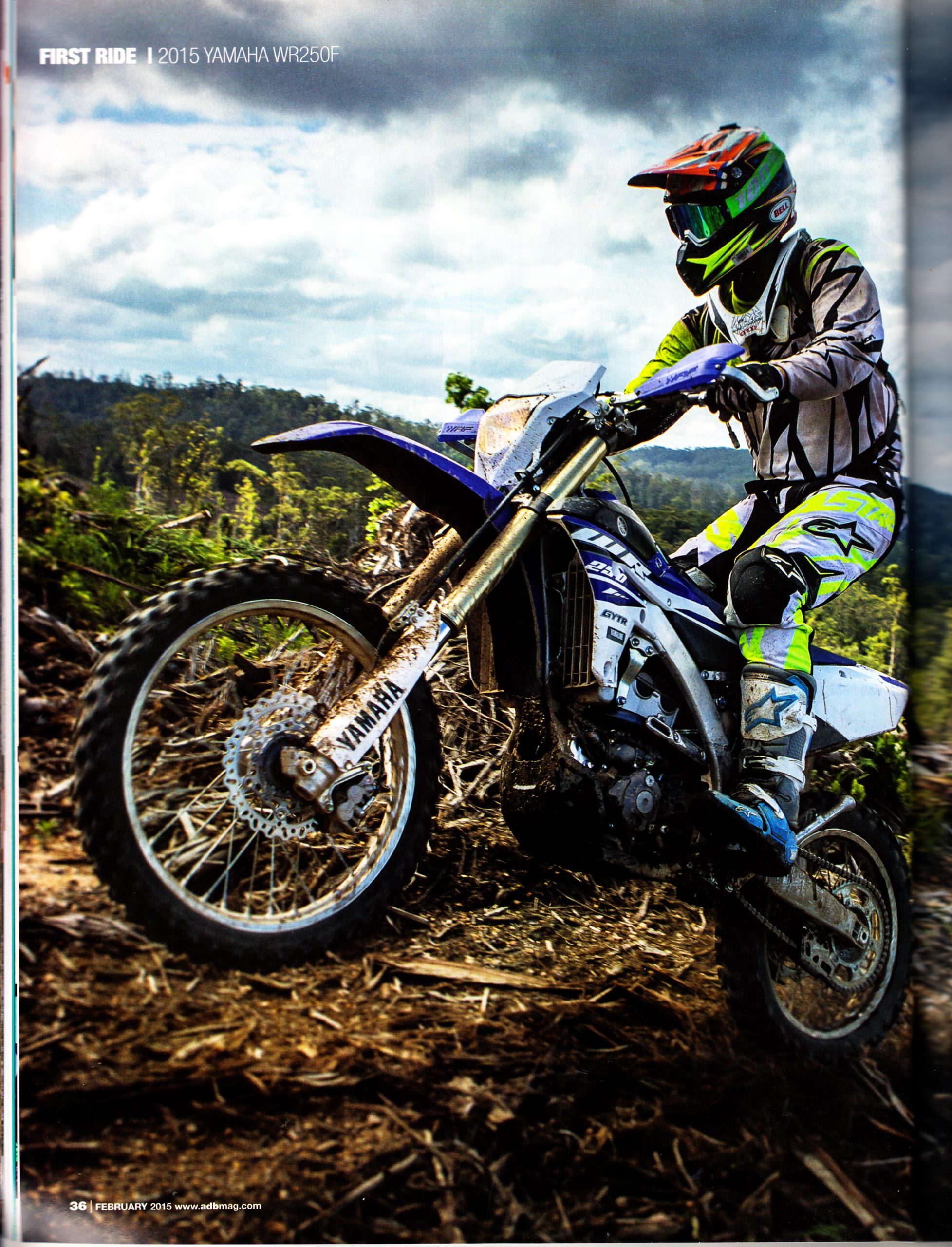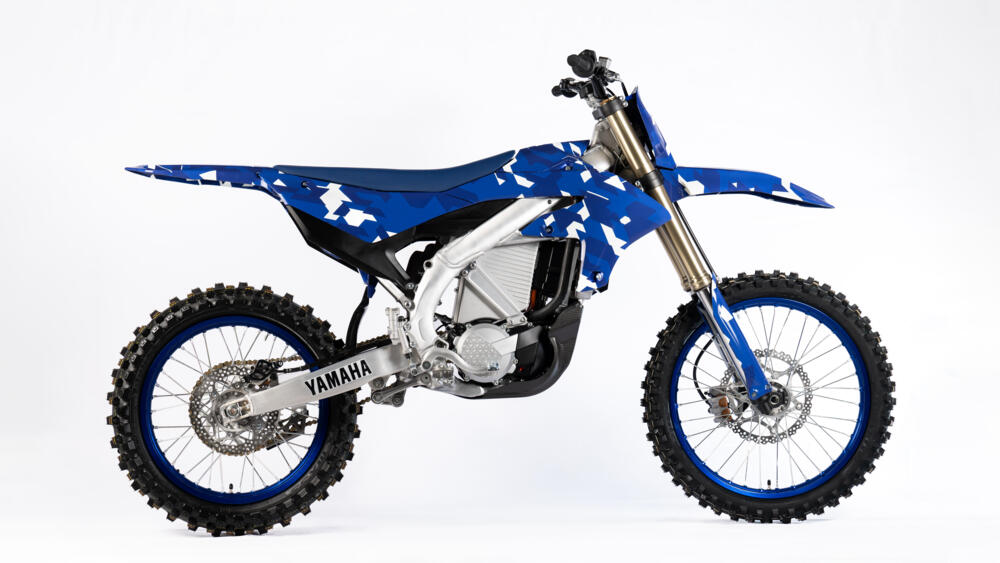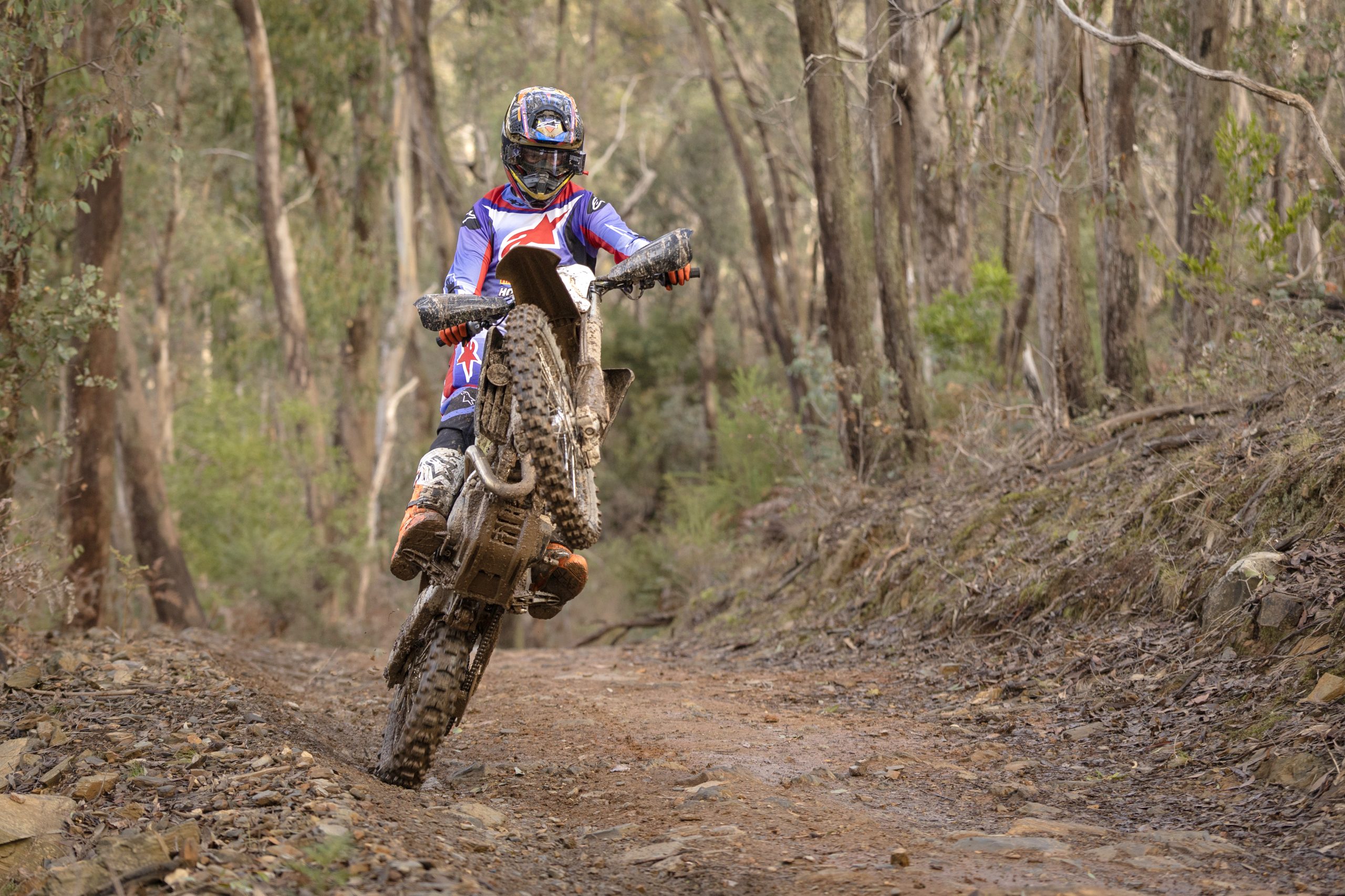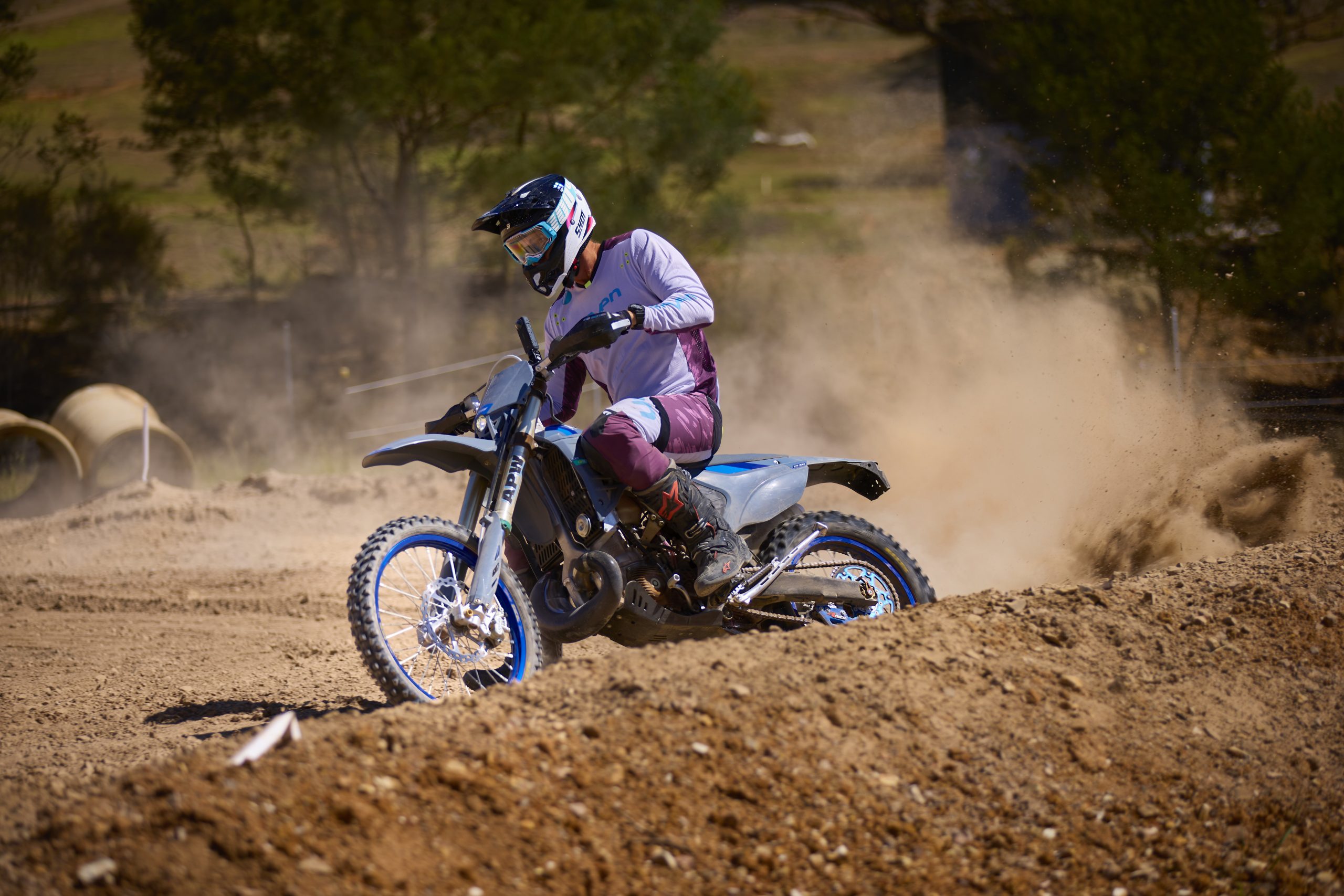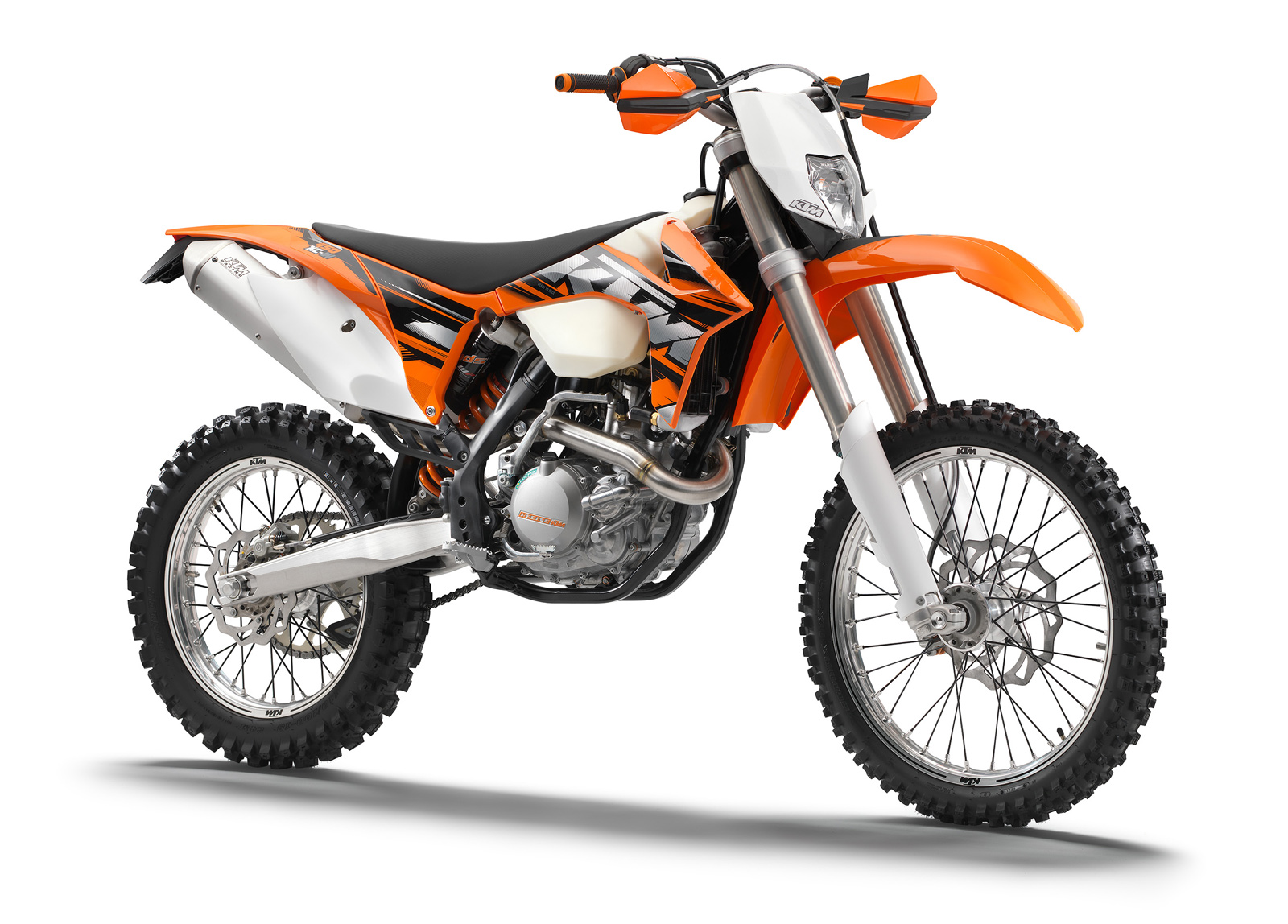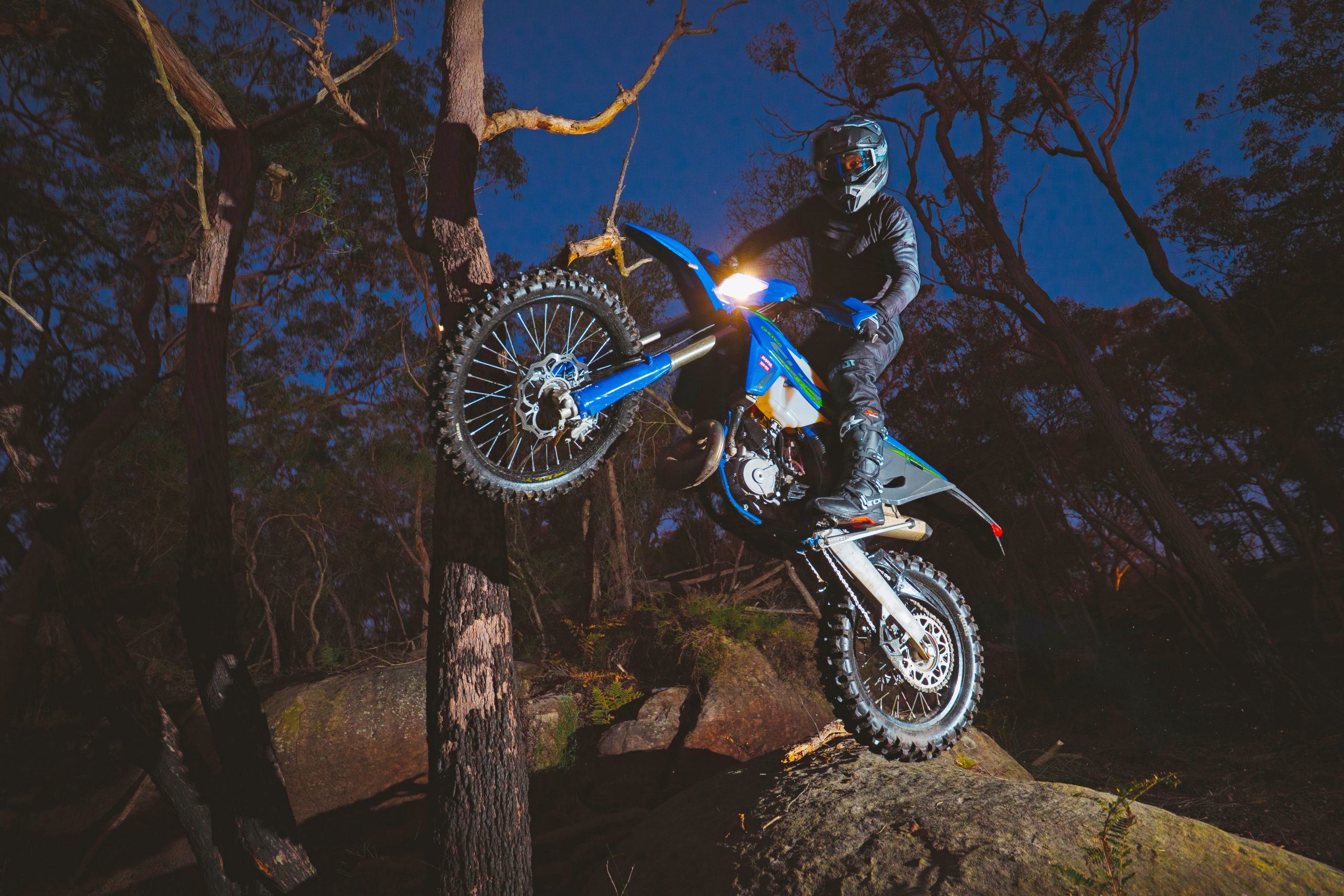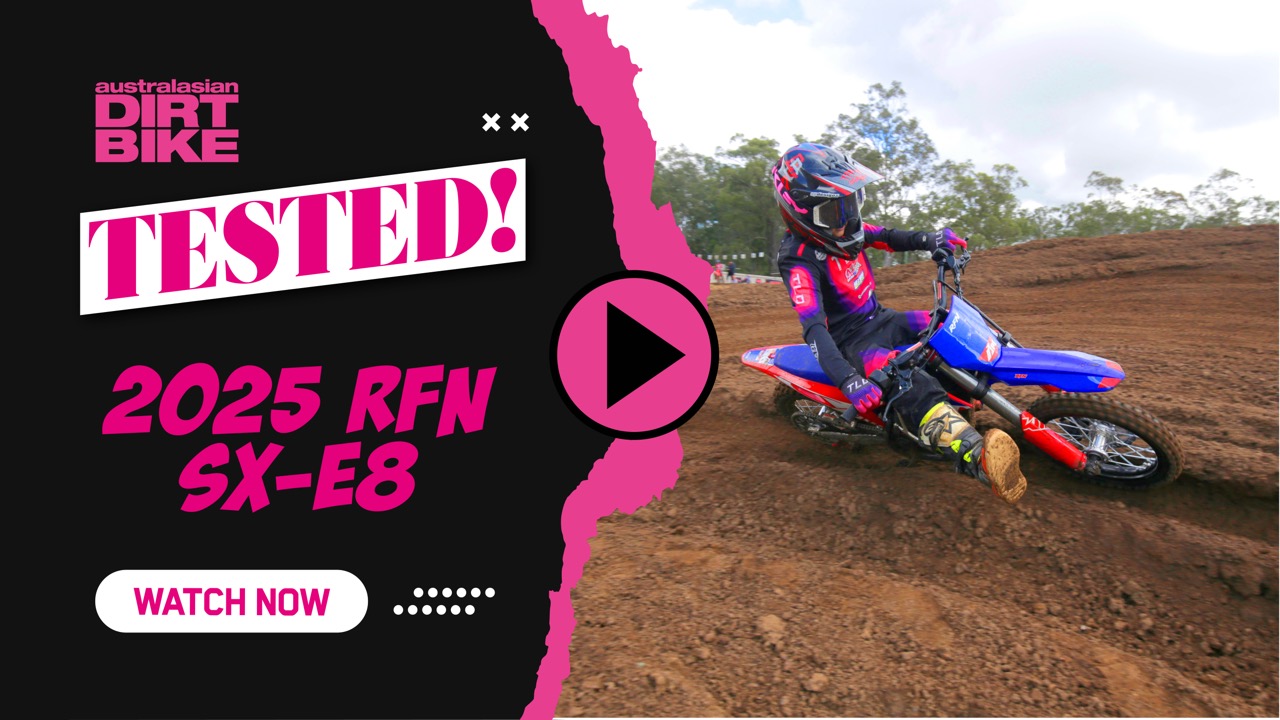The wait is finally over. After years without a 450cc motocross shootout, we’re back with the biggest, most anticipated showdown on Australian soil. Pulling together every model and manufacturer has been no easy feat – thanks to post-Covid shortages and the fierce demand for dirtbikes, getting our hands on these machines has felt like tracking down treasure. But this is what shootouts are all about: taking these bikes out of the showroom and putting them head-to-head, so you can decide which one really lives up to the hype.
Remember when shootouts were an annual staple? Every year, fans would wait on the edge of their seats, eager for the new lineup and ready to dive into the pages of their favourite magazine. I was right there with you, flipping straight to the final page, rooting for my pick to come out on top. If my favourite wasn’t crowned, I’d blame the testers, convinced the results must be skewed. And I know many of you have already done the same – jumped ahead, peeked at the winner, and now you’re reading this wondering if we got it right. But this isn’t about playing favourites; this shootout is about digging deep into each bike’s strengths and exposing the quirks that make them unique. We’re not just here to name a champion; we’re here to help you, the rider, find the bike that fits your style and goals.
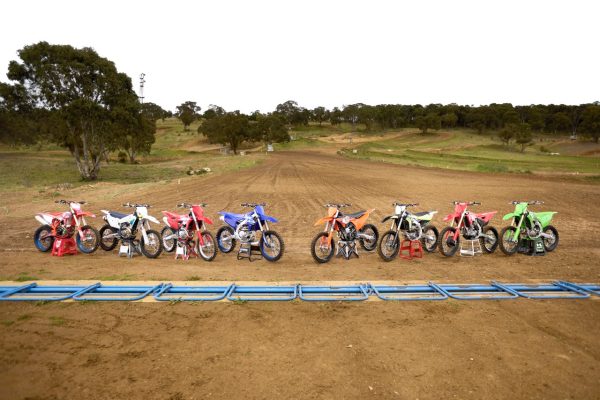
We know motocross bikes don’t come cheap, and most of us don’t have the luxury of a private fleet to pick and choose from. That’s where this shootout steps in. Gone are the days of one bike towering above the rest; in 2025, they’re all capable machines, each with a unique fit for different abilities and riding styles. Our goal? To map out exactly where each bike shines and where it might fall short – not just for podium-toppers but for every rider.
With eight elite machines in the lineup – and more to come with Triumph and Ducati entering the fray next year – there’s no shortage of options here. Yes, the Suzuki RM-Z might feel dated, and we’re as disappointed as you that Suzuki didn’t show up to let us test it alongside the rest. Ken Roczen might make it look capable, but without an electric start, hydraulic clutch, or modern shock updates, Suzuki’s left us wondering where it would really stand. TM didn’t join us either, despite its competitive 450.
But we’re not short on excitement. Each bike here has the potential to be a game-changer. We’re about to dive into a face-off like no other – Australia’s only 450cc motocross shootout. Which bike will rise to the top? Let’s get into it and find out.
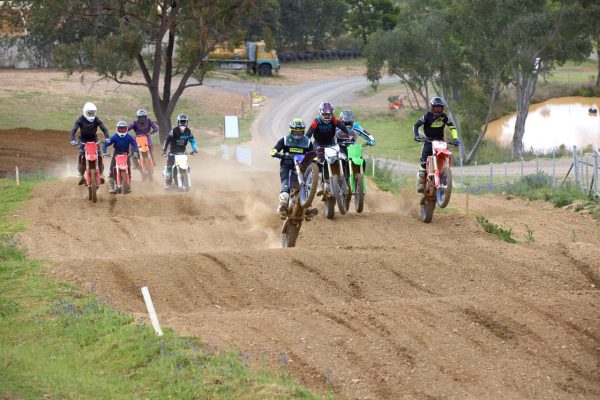
THE TEST CREW:
Name: Jeff Briggs
Level: A-grade
Age: 40
Weight: 90kg
Height: 178
Bike: GASGAS EC 350F
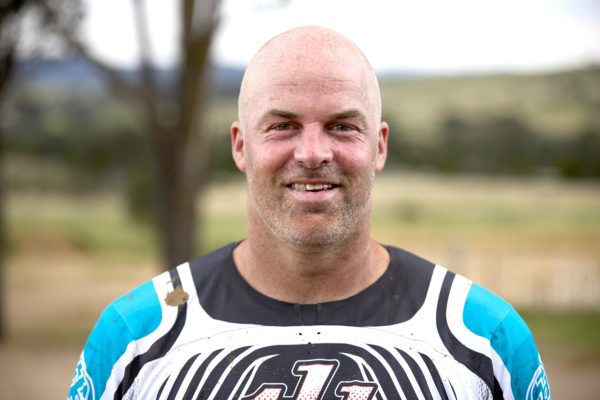
Name: Mat Boyd
Level: A-grade/Pro
Age: 37
Weight: 95kg
Height: 182cm
Bike: Honda CRF250R

Name: Joel Rizzo
Level: Pro
Age: 33
Weight: 65kg
Height: 168cm
Bike: Beta RX450
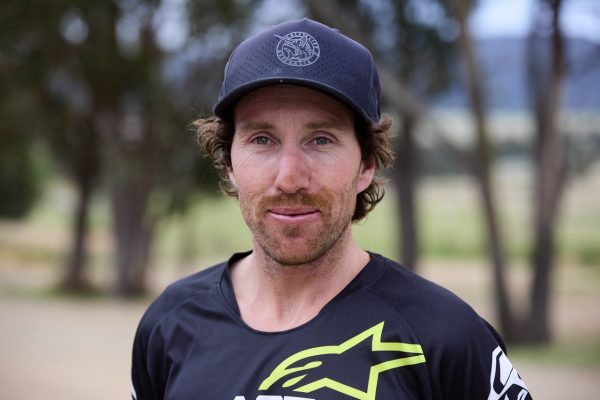
Name: Beau Ralston
Level: Pro
Age: 33
Weight: 190cm
Height: 90kg
Bike: Kawasaki KX450

Name: Charlie White
Level: A-grade
Age: 29
Weight: 80kg
Height: 188cm
Bike: Yamaha YZ450F

Name: Phillip Foster
Level: C-grade
Age: 24
Weight: 75kg
Height: 182cm
Bike: KTM 450SX-F

Name: Stefan Granquist
Level: Pro
Age: 37
Weight: 90kg
Height: 190cm
Bike: Husqvarna FC 450
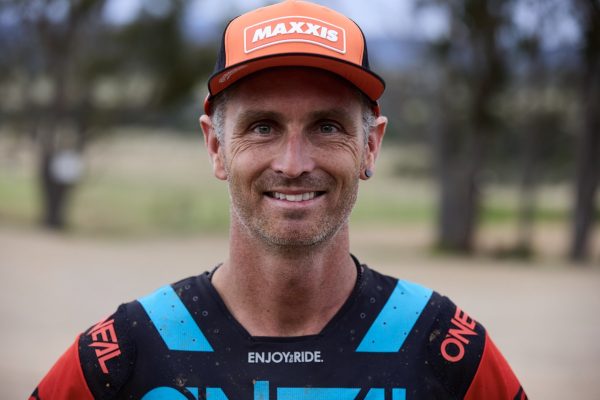
THE SCORECARD
For a number of years ADB has had an extremely fair and unbiased way of scoring the bikes in its shootouts. We start off with each of the manufacturers being represented by a particular rider. And when it comes time to score the bikes the riders allocate scores in multiple categories for each machine except for the brand that they represent. The scores are split into three categories, comprising Engine, Suspension/Steering and Ergos/Brakes, with each rider giving a score out of 10 for each category on our 450cc motocross shootout.
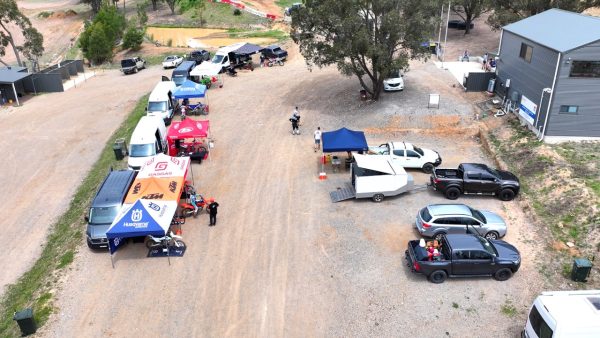
The location
For our 450cc motocross shootout this year we decided to use the Goulburn Motocross Track as our venue. Goulburn is a unique track that is situated on a steep hill with fast runs up and down the hillside with some decent big hits that are rarely seen on other motocross tracks around Australia these days. The club gave the track a good groom and ripped in some deep lines for us and shaped up some decent lips on the jumps so we could give the 450s a good workout on a fast track while being able to catch some decent air time and have some fun.
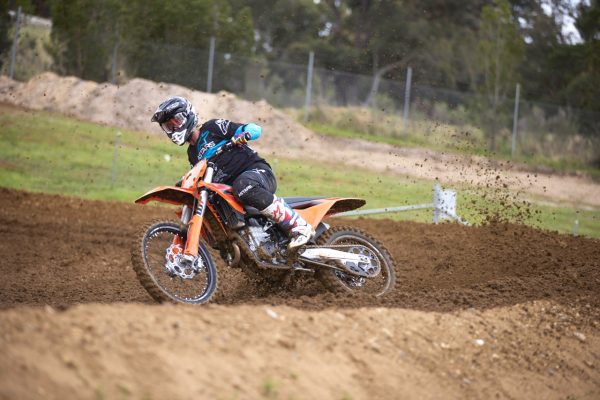
KTM 450 SX-F – Best All-Rounder
The KTM 450 SX-F was a surprising standout in this 450cc motocross shootout, quickly becoming a favourite among testers who didn’t expect to enjoy it as much as they did. The bike’s 449.9cc single-cylinder 4-stroke engine delivers a robust yet manageable power that earned a lot of praise. It packs a punch, pulling hard through loamy soil and conquering hills with impressive torque. In the aggressive map mode, the engine’s 13.1:1 compression ratio truly comes alive, giving the KTM a responsive, lively feel. For me, this setup worked perfectly, as I enjoy a strong, responsive engine that I can manage with clutch and throttle finesse. However, for those who prefer a gentler approach, the standard mode smooths things out without losing too much of the bike’s signature strength.
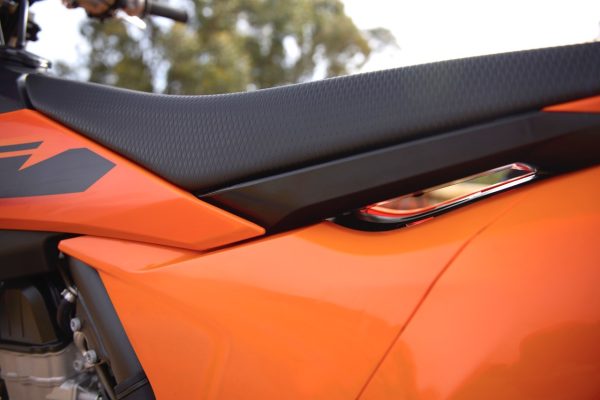
Ergonomically, the KTM is typically a bike that takes some getting used to, especially with its Neken handlebar, which has a reputation for being stiff and transmitting vibration. However, this year at our 450cc motocross shootout, I found myself adjusting to it quickly and didn’t notice the usual feedback through the ’bar. The KTM’s central double-cradle-type 25CrMo4 steel frame, paired with a 1493mm wheelbase, provides a stable and well-balanced feel, while the 958mm seat height allows for good control and manoeuvrability.
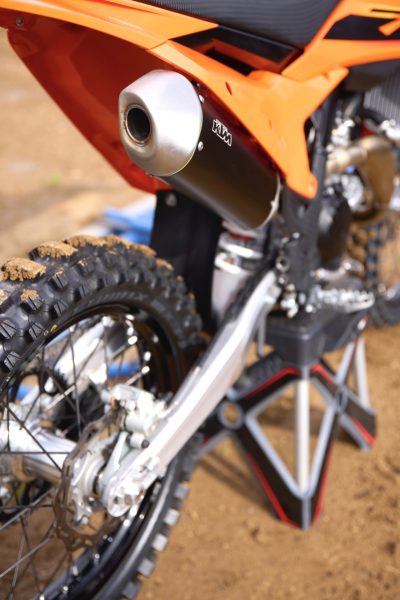
In terms of suspension, the rear WP XACT monoshock performs almost flawlessly; a quick sag adjustment and a few clicks stiffer on compression and I was set. Unfortunately, the front WP XACT-USD air fork, though the best air fork KTM has produced, still leaves something to be desired. Despite 310mm of travel, the fork can feel hyper-responsive, causing the front wheel to skip over bumps rather than following the track’s contour. To mitigate this, I dialled in the rebound as far as the adjuster would allow, yet I still felt like I was constantly managing the fork rather than pushing the bike to its full potential. Replacing the fork cartridges with WP 6500 closed cartridges would significantly improve front-end confidence and allow serious riders to capitalise on the bike’s overall strengths.
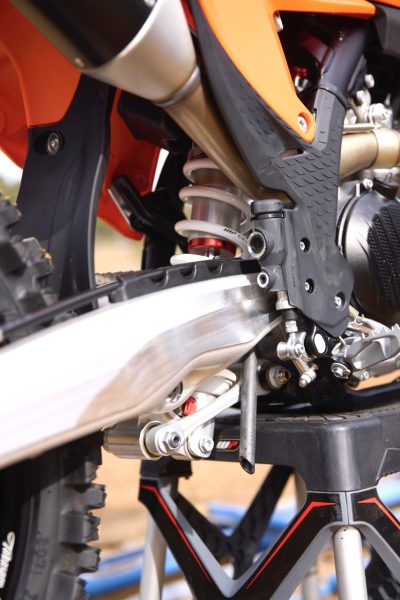
The KTM chassis corners brilliantly, offering stability through turns, and its 343mm of ground clearance provides ample room for tackling varied terrain. The braking setup, featuring a 260mm front disc and a 220mm rear disc, delivers strong stopping power, complementing the bike’s lightweight 102.6kg frame (without fuel) and providing a reassuring level of control in technical sections. The 7.2-litre fuel tank also adds a decent range, making the KTM ready for long sessions without frequent refuelling.
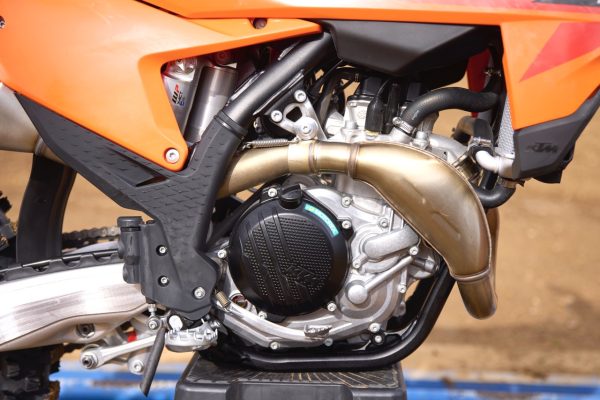
For racers who seek a machine with strong, usable power and stable handling, the KTM 450 SX-F is hard to beat. The bike’s aluminium-reinforced polyamide rear subframe adds to its lightweight build, and its powerful, electric-start engine, managed through a Keihin EFI system with a 44mm throttle body, provides seamless performance. Adding an aftermarket exhaust like the Akrapovic could further enhance its power, but unless you’re looking to significantly increase the KTM’s already impressive power, it may not be necessary.
In summary, the KTM 450 SX-F is a formidable race machine, combining cornering precision, strong brakes, and powerful yet controllable performance. With a few suspension tweaks, it would reach its full potential, making it an ideal choice for serious riders aiming for peak performance.
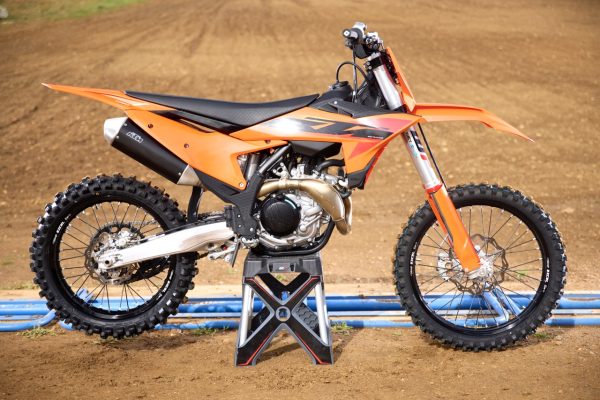
Testers take
Charlie White
“The KTM was really easy to ride with strong performance across the board. Brakes and clutch were faultless, making for a comfortable and enjoyable experience overall.”
Jeff Briggs
“I really liked the KTM. It has a linear, strong motor with good bottom and midrange power. The suspension held up well, although it was slightly harsh on the initial stroke. Ergos were classic KTM – solid and predictable. And the Brembo brakes, as always, were excellent.”
Joel Rizzo
“The KTM had a solid bottom and midrange but lacked a bit in over-rev pull. Suspension felt plush, offering better front-end feel than in previous years, and the bike felt slim and balanced. The ’bar, clutch, and general setup were all on point.”
Beau Ralston
“Unreal engine package – super usable and predictable. The air fork was adjustable but didn’t quite provide the comfort I was looking for. Overall, the KTM engine felt above the rest in terms of usability.”
Stefan Granquist
“I liked the engine; it had a well-rounded package. The suspension took some adjusting to get the front-end feel I wanted. The shock performed well, and while the fork wasn’t my favourite, we made it work. Overall, the KTM felt steady and reliable.”
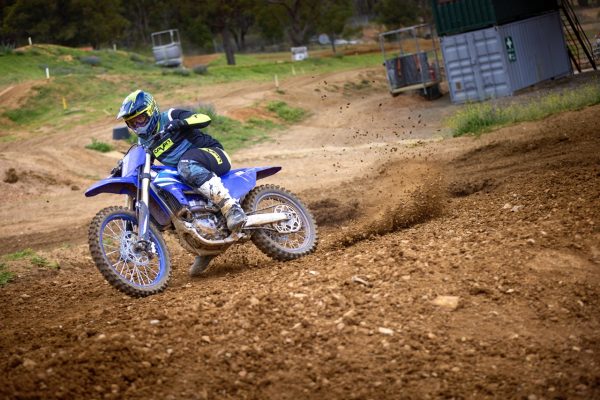
Yamaha YZ450F – Best power and agility combo
Right from the start at our 450cc motocross shootout, the Yamaha YZ450F shows off its smooth, refined suspension. Even just riding across the carpark, the bike feels plush, absorbing every small bump and rock with ease. For experienced testers who’ve spent over a decade riding, these initial impressions reveal a lot about how a bike will handle on the track, and the YZ impresses immediately. Once on the track, it’s clear that Yamaha’s collaboration with KYB on the closed-cartridge fork and the YZ’s bilateral beam chassis results in an incredibly comfortable ride. The suspension feels almost like floating, with 310mm of travel in the front telescopic fork and 315mm in the rear, allowing the YZ to glide over track imperfections.
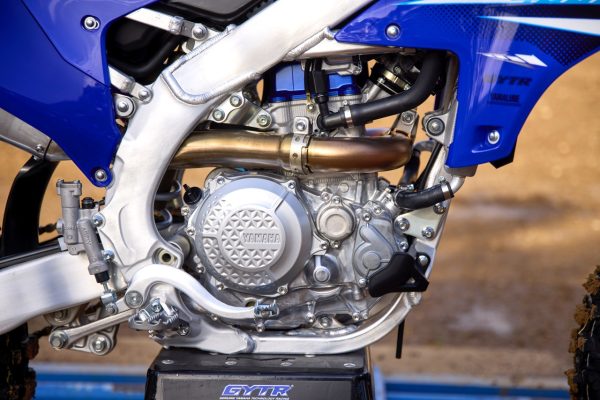
However, this level of comfort does come with a trade-off: high-level racers may find themselves wanting more feedback from the front wheel. For a sharper handling experience, we found that dropping the fork to the end of the tubes raises the front end, which significantly improves cornering and steering responsiveness. Yamaha’s sensitivity to fork height and sag is notable here – get either slightly off, and you’ll find yourself fighting the bike’s natural steering tendencies. But dial them in, and the YZ450F rewards you with precision handling and ease through turns. Its 1480mm wheelbase, combined with 350mm of ground clearance, provides excellent stability while ensuring agility around corners.
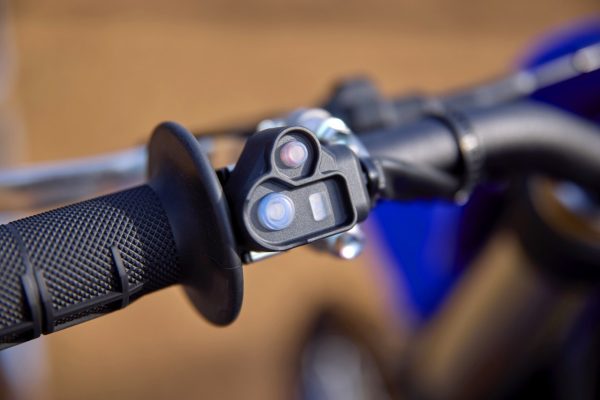
Underneath all this comfort lies an engine with serious power. The 450cc liquid-cooled, DOHC, 4-valve engine spools up like a turbo, with a rapid RPM climb that makes the YZ come alive on straights. The crank is light, giving the engine a quick-revving feel and letting it drive hard out of corners. The straight-line acceleration is exhilarating. With a compression ratio of 13.0:1 and Yamaha’s fuel injection system, the bike offers impressive power, but it demands refined throttle and clutch control, especially for less experienced riders. The cable clutch provides a nice, precise feel, though it does require occasional adjustments to maintain clutch free-play, especially under heat. This level of refinement may be numbered, as many bikes now move to hydraulic clutches, but for now, the YZ clutch feels solid and responsive.
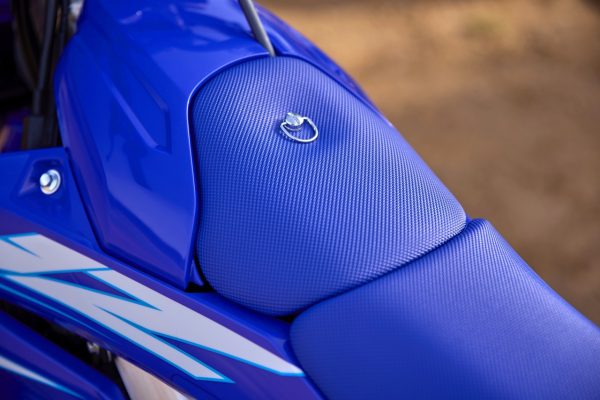
Braking power is solid, with a 270mm hydraulic single disc in the front and a 240mm disc in the rear, giving the YZ-F the stopping power it needs to match its performance. At 109kg wet, the Yamaha feels balanced and controllable, yet it’s clearly a bike geared for riders with experience who can manage its robust power. With the five-speed gearbox delivering power seamlessly, the YZ-F offers smooth shifts and plenty of versatility across the track.
One unique feature of the YZ450F is its compatibility with Yamaha’s Power Tuner App, allowing riders to fine-tune the engine mapping to match their skill level or track conditions. For beginners, this feature is essential for taming the powerful engine, but it also adds a level of customisation for advanced riders seeking an optimal setup.
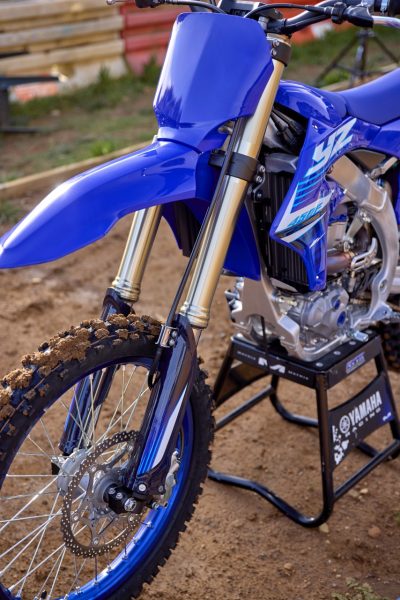
With a 6.2-litre fuel tank, a seat height of 965mm, and overall dimensions that lend it an approachable but competitive feel, the YZ450F is all about comfort and performance combined. It’s a bike built for serious riders looking for an incredibly comfortable yet powerful machine. If I had to sum it up in one word, it would be “comfort” – but don’t let that fool you. The YZ-F is every bit the serious racing machine, ready to perform at the highest levels with just a few adjustments.
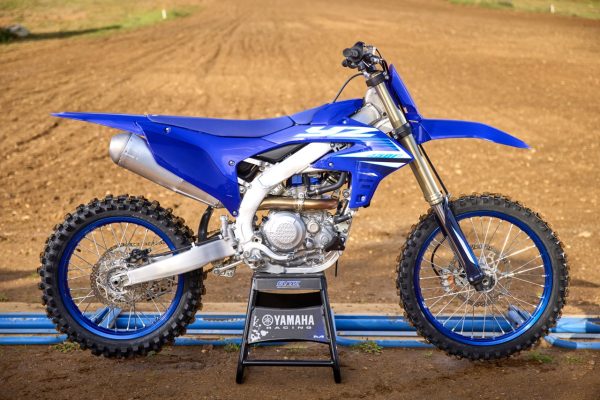
Testers take
Charlie White
“The Yamaha performed incredibly well across the board. The power is outstanding, with strong traction, and it felt very comfortable to ride. I was right at home on it.”
Jeff Briggs
“The Yamaha was my top pick. Everything about it – engine, suspension, chassis – works perfectly together. The lack of engine braking made it easier to corner, and the suspension settings have improved from last year. Great ergos and strong Nissin brakes.”
Joel Rizzo
“Very responsive power top to bottom. Suspension was the best of the lot, holding up well and providing a plush feel. I wasn’t a fan of the ’bar height, but overall, it’s a slim, balanced, and user-friendly bike.”
Beau Ralston
“The Yamaha was instantly comfortable, with predictable and solid suspension that allowed for aggressive riding. The engine is unbelievably fast, and while it might not be the most usable, it’s impressive.”
Stefan Granquist
“One of my favourites, with exceptional suspension and handling. Even when the track dried out, the Yamaha’s performance held up. The engine is powerful, but I did experience a few false neutrals. Overall, though, this bike was a standout.”
Phillip Foster
“I loved the Yamaha. Aggressive yet smooth through the track – there’s nothing I’d change.”
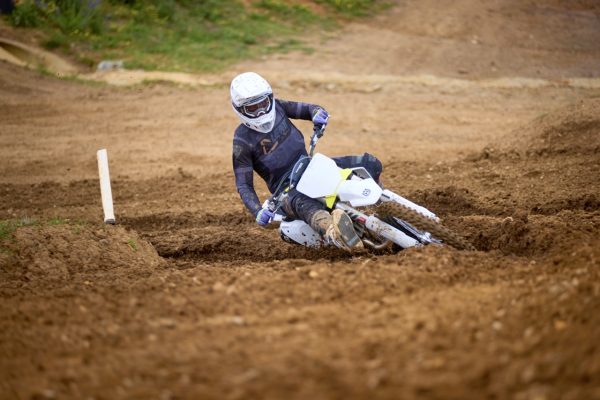
Husqvarna FC 450 – Best finish and high-end Features
The Husqvarna FC 450 isn’t a bike I typically gel with right away, but it certainly earned praise from many of our testers at our 450cc motocross shootout. Personally, I lean towards the feel of the KTM, though there was a fair split of opinion on this in the group. Ergonomically, the Husky often throws me off, particularly with the Pro Taper handlebar. While I’m not a fan of its bend, I appreciate that it offers a softer feel than the ’bar on the KTM or GASGAS. Perhaps it’s a difference in alloy or taper, but it absorbs vibrations better – though I’d prefer if it was a bit taller.
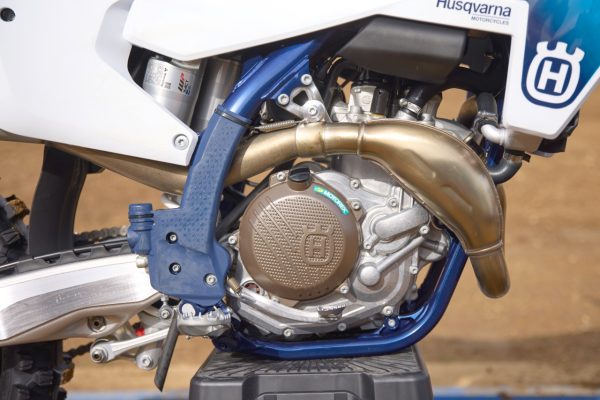
The Husky rode noticeably lower to the ground compared to its Austrian siblings at 450cc motocross shootout. For shorter riders, this grounded feel may be an advantage, giving a more planted sensation, particularly in straight-line stability, which even outperforms the KTM. At 946mm, the seat height is lower, which can make cornering and handling feel smooth and secure. For taller riders like myself, however, this low stance can make it challenging to keep my leg out of deeper ruts. Still, the reduced height doesn’t detract from the Husky’s cornering prowess; in fact, its 1490mm wheelbase helps the bike feel balanced and quick to turn.
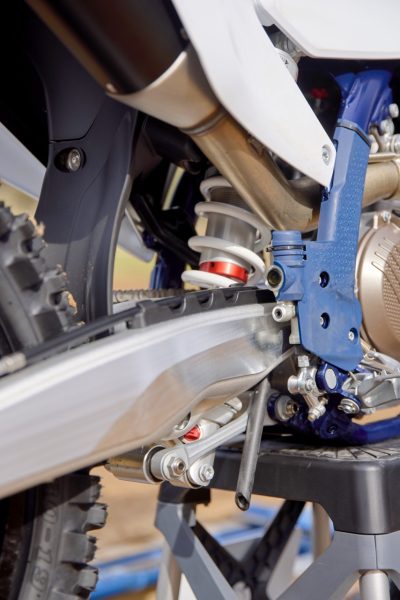
The WP XACT-USD air fork, with 305mm of travel, is a point of contention. Much like on the KTM and GASGAS, this fork felt hyper-responsive, reacting to every small bump on the track at our 450cc motocross shootout. If WP’s goal was to maximise feedback, it has succeeded. However, the result is that I find myself dialling in the rebound as far as possible to calm the fork down and prevent it from bouncing. In high-speed sections, the front end can feel overly active, leaving me focused more on managing the fork than pushing the bike’s limits.
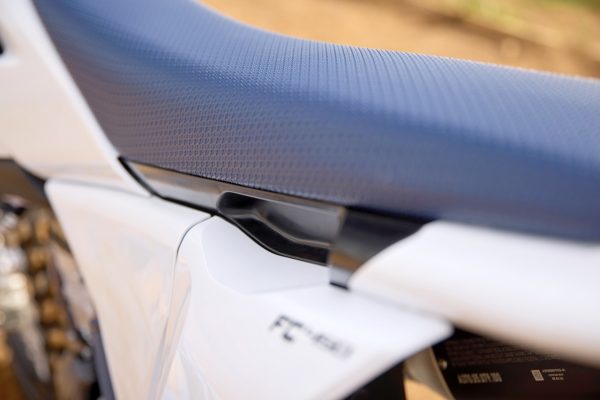
The FC 450 sports a 449.9cc liquid-cooled, single-cylinder, 4-stroke engine, equipped with Keihin electronic fuel injection through a 44 mm throttle body. The engine really shines in aggressive mode, coming alive with a smooth yet powerful response, although it’s noticeably softer off the bottom than the KTM. The 13.6:1 compression ratio provides a good balance of power and rideability. While some riders claim the hydraulic clutch on the Husky lacks the feel of others, I found it just as reliable and responsive as Brembo setups tend to be.
The braking is solid on the FC 450, with a 260mm front disc and a 220mm rear disc. Combined with the bike’s lightweight frame, which tips the scales at just 102.8kg without fuel, the brakes offer impressive stopping power, giving riders control and confidence when attacking the track. The bike’s 7.2-litre fuel tank offers a slightly longer range than some of its competitors, making it better suited for those who might push it on longer rides.
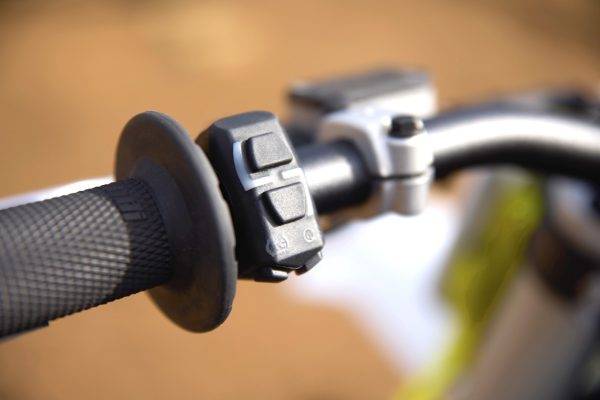
For riders who prefer a less aggressive, grounded feel in a 450, the Husky has plenty to offer. It’s a bike that fits well with riders who appreciate stability and comfort, especially those who are shorter in stature or value a milder power hit. But for those looking to unleash its full potential, upgrading to a WP Cone Valve fork, a Trax shock, and an Akrapovic exhaust transforms the Husky into an entirely different beast – one ready to go head-to-head with any bike on the track.
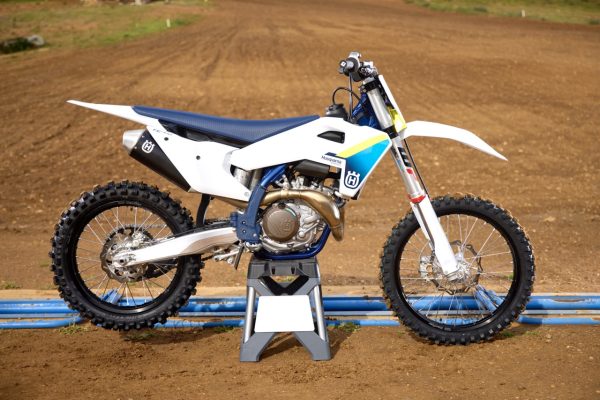
Testers take
Charlie White
“The Husky was incredibly stable. The clutch and brakes were impressive, and even on a rough track, it performed well. Power was strong, and overall, it felt like a very capable bike.”
Jeff Briggs
“Great bottom-end with a slight off-throttle engine braking. The traction control worked well to prevent spinning, and the suspension was a bit soft. I had to push the fork through slightly, but otherwise, it handled comfortably.”
Joel Rizzo
“Strong midrange power but less bottom than the KTM. The suspension was stiff, and the front end felt less connected initially. It felt stable on jumps and overall had a solid feel.”
Beau Ralston
“Similar to the KTM in power but with a less comfortable cockpit. The rear end was slightly lower, which I liked for comfort, although it felt less performance-oriented.”
Phillip Foster
“I loved the Husky’s light feel and punchy motor. Only downside for me was the air fork; I prefer spring and oil. Otherwise, it was a great bike for handling and fun.”
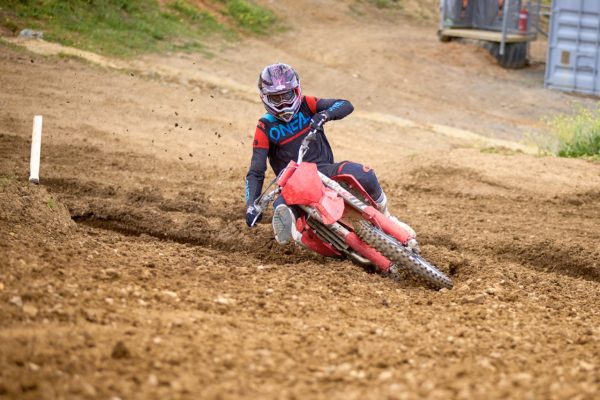
GASGAS MC 450F – The people’s bike
The GASGAS MC 450F undoubtedly stands out in the paddock at our 450cc motocross shootout as one of the most eye-catching bikes thanks to its striking red plastics and sharp new bodywork that turn heads from across the pits. Though it might look like the lead bike in the Austrian lineup, the GASGAS is actually the most affordable option in the KTM Group’s 450 range. To achieve that price point, GASGAS has streamlined a few components compared to the KTM and Husqvarna. It swaps out the handlebar and triple clamps for simpler versions, ditches the handlebar-mounted map switch, and uses a different exhaust system without a resonating chamber in the header pipe.
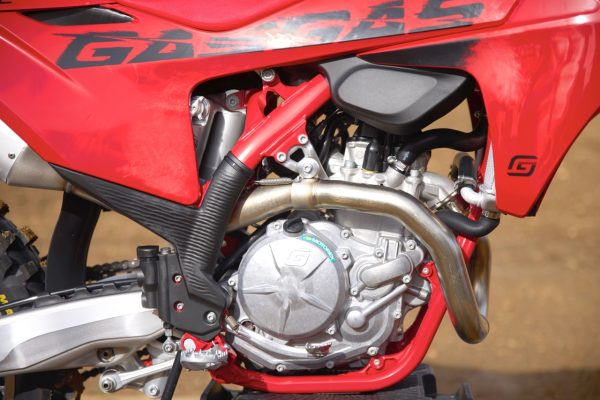
Despite these changes, the GASGAS MC 450F rides uniquely within the group, with each subtle difference adding up to a distinct experience on the track. Its 449.9cc, liquid-cooled, single-cylinder 4-stroke engine, fitted with Keihin electronic fuel injection and a 44mm throttle body, provides the softest power delivery of the Austrian trio. The compression ratio is 13.1:1, and the engine feels tuned more for comfort than aggressive response. While we thought the KTM and Husky engines packed a stronger initial punch at our 450cc motocross shootout, the GASGAS delivers power more smoothly, making it a forgiving choice for riders who prefer a milder throttle response. However, without a map switch, there’s no option to adjust this power curve on the fly, which limits its flexibility for advanced riders looking to ramp up performance.
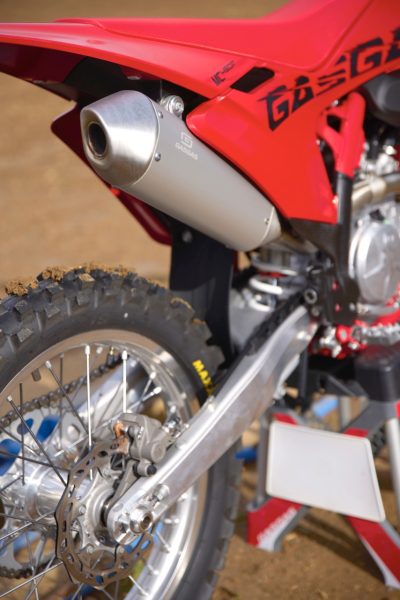
In terms of handling, the GASGAS shares the same chassis height as the KTM, with a seat height of 956mm and a generous ground clearance of 343mm, making it well-suited for riders of varying sizes. The softer suspension setup, achieved with a WP XACT-USD air fork with 300mm of travel in the front and a WP XACT Monoshock in the rear, emphasises comfort. The suspension is more forgiving over smaller bumps and uneven terrain, an ideal feature for intermediate riders or those focused on a smoother ride rather than hard, aggressive performance. That said, like the KTM and Husky, the GASGAS fork remained sensitive and reacted to nearly every bump on the track at our 450cc motocross shootout. This hyperactivity may prompt faster riders to consider adjustments, as the fork can feel bouncy, potentially distracting on more challenging sections.
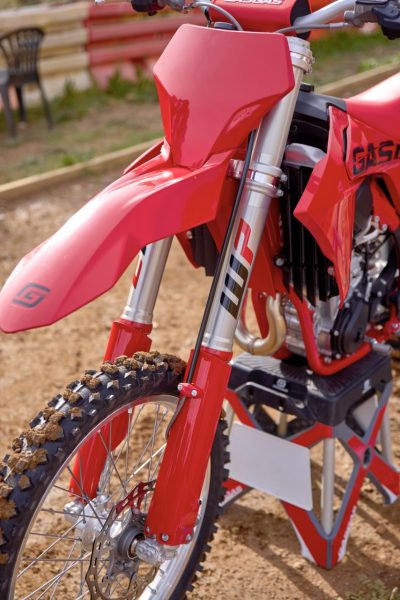
The braking system on the GASGAS also differs, featuring Braktec components with a 260mm front disc and a 220mm rear disc. Although Braktec brakes have historically trailed Brembo in terms of feel and stopping power, recent improvements mean the difference is now barely noticeable. Combined with the bike’s light frame, weighing just 103kg without fuel, the GASGAS offers ample braking control for most track situations.
One area where the GASGAS distinguishes itself is in its flex-focused chassis design, using cast triple clamps instead of CNC-machined ones like on the KTM and Husqvarna. While the cast clamps may introduce more flex, especially at higher speeds, they also improve comfort by absorbing some of the harsher track bumps. For slower-paced or less aggressive riders, this added flex offers a more comfortable experience. However, advanced riders who push the bike’s limits might find the setup less precise and consider stiffer triple clamps to improve front-end stability at speed. If you’re at the point where you’re upgrading triple clamps, chances are you’d also be swapping out the suspension, adding a performance exhaust, and even remapping the engine for enhanced performance.
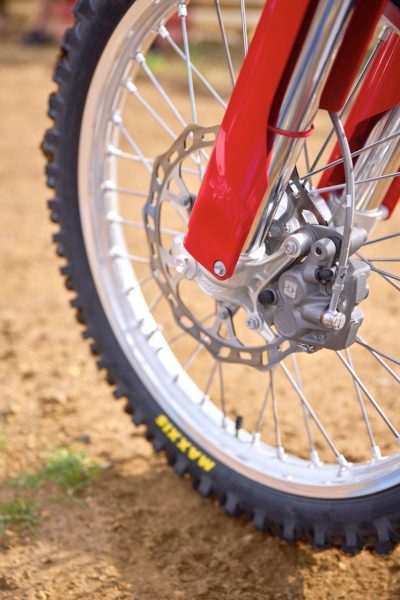
With a 7.9-litre fuel tank and a wheelbase of 1493mm, the GASGAS MC 450F balances affordability and comfort with just enough performance to keep it competitive. It’s an ideal choice for riders who prioritise smooth handling and a forgiving power curve, without needing the aggressive edge of its KTM or Husqvarna siblings. For those looking to build on a solid foundation, the GASGAS MC 450F is a blank canvas waiting to be customised to fit a wide range of riding styles and preferences.
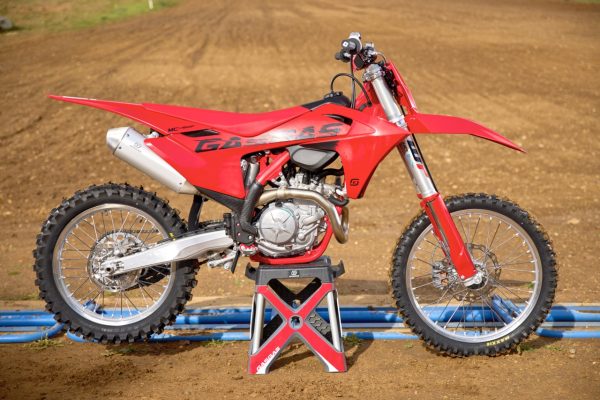
Testers take
Charlie White
“The GASGAS felt similar to the KTM but had a little more vibration. It was friendly to ride and had a great bottom-end snap, making it very rider-friendly overall.”
Jeff Briggs
“The GASGAS had a more mellow feel compared to the KTM and Husky, with softer suspension. It was comfortable, although the ’bar felt high and a bit off. Brakes were identical to the KTM and Husky, but I did feel a slight drop in braking performance.”
Joel Rizzo
“The GASGAS felt a little flat in power compared to its KTM and Husky counterparts. The suspension was softer, which was unexpected. The ’bar was too high for my liking, but the brakes and general feel were consistent with the KTM and Husky.
Beau Ralston
“The GASGAS was the best feeling bike out of the three KTM brands for me. Despite the lack of switches and extras, it handled beautifully and felt slightly better than the KTM and Husky.”
Phillip Foster
“Similar to the Husky, I’d probably swap the air fork for springs, but otherwise, it was stable through the rollers and felt nice to ride overall.”
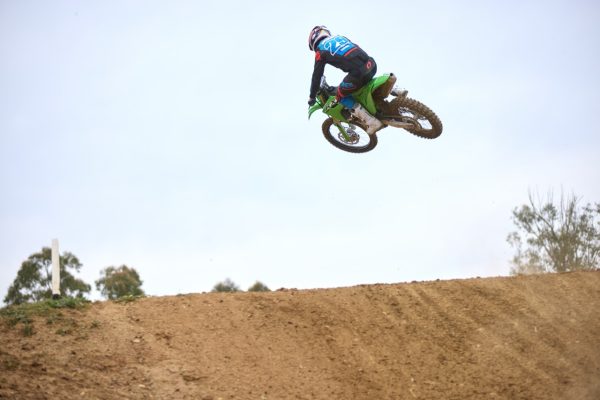
Kawasaki KX450F – The best handling bike
As a fan of the 2022 and 2023 KX450F models, I have to admit that Kawasaki took a drastic turn with the 2024-25 KX450F, and it’s a shift that some might find hard to embrace. The latest model featured in our 450cc motocross shootout feels like an entirely new bike – looking, riding and handling in a way that departs significantly from its predecessors. For those who thought the previous KX450F was nearly perfect, this bike will feel different. It’s worth noting that it’s still an incredibly capable machine – just one that now feels more akin to a Honda than a classic Kawasaki.
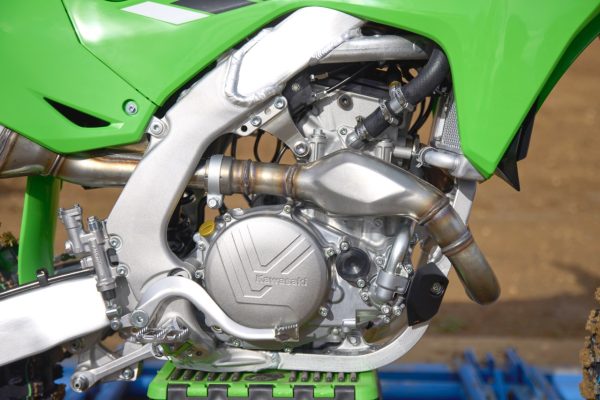
One of the areas where Kawasaki got it right is the chassis. The aluminium perimeter frame offers precise handling, tipping into ruts and turns with confidence, almost as if it’s on rails. With a rake of 26.6° and a trail of 114mm, the KX450F has a balanced geometry that translates well to the track. The front brake, equipped with a 270mm single semi-floating petal disc and a Brembo master cylinder, offers a significant improvement over older models, addressing the previous issue of brake fade and a spongy feel. Combined with a single 240mm petal disc in the rear, the braking is now a strength rather than a liability. The cockpit, with better-shaped levers and lock-on grips, feels more comfortable, and the clutch offers a smooth hydraulic action that adds to the bike’s refined ergonomics.
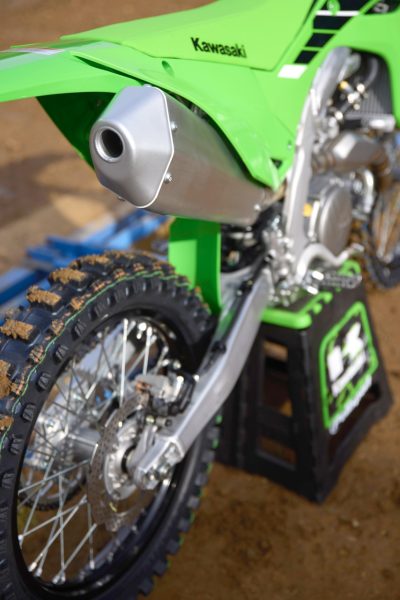
However, the new KX450F faces challenges with both its engine and suspension. The 449cc single-cylinder, DOHC, liquid-cooled engine, while well-equipped with DFI and a 44mm Keihin throttle body, doesn’t deliver the punch that riders expect in the 450 class. With a compression ratio of 12.5:1, it feels underpowered, closer to a 350 in its delivery, requiring high revs to pull effectively. Unlike the 2022 and 2023 models, the engine lacks the immediate bark and low-end grunt, leaving you wanting more in every power mode available. The exhaust also felt restrictive at our 450cc motocross shootout, as if the engine’s potential is muffled. Some aftermarket airbox modifications and a new pipe could help the engine breathe better and restore some of that aggressive character.
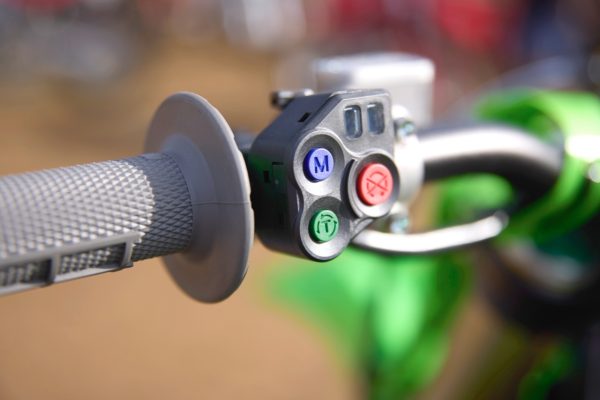
The suspension is a little soft. The front Showa inverted telescopic coil-spring fork, with 21-way compression and 22-way rebound adjustability, and the rear Uni-Trak gas-charged shock, though technically impressive, feel far too soft for a 450. With a front wheel travel of 305mm and a rear travel of 307mm, the setup feels like it’s designed for a smaller 250 rather than a powerful 450. The suspension sits low in the stroke, making the bike feel a little under-sprung and less stable at high speeds at our testers at our 450cc motocross shootout. For riders in the 70kg range, this might be adequate, but for anyone heavier or more aggressive on the track, it fails to showcase the bike’s true potential.
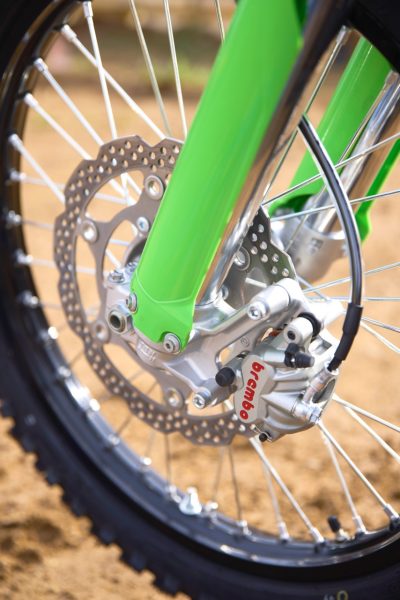
Despite this, the KX450 does come with some noteworthy features. The bike includes electronic rider aids such as Kawasaki Traction Control (KTRC) and Launch Control Mode, which, when paired with the bike’s smartphone connectivity via the RIDEOLOGY THE APP KX, provide some customisable control over its performance. The bike’s dimensions –2180mm in length, 820mm in width, and a height of 1270mm with a seat height of 960mm – combine with a wheelbase of 1480 mm to create a stable platform, but only when the suspension is adequately tuned.
The 2024-25 KX450F remains a solid foundation with exceptional handling characteristics, but it needs some refinement to reach its full potential. A revalve on the suspension, a new exhaust, and some airbox mods would unlock a much-needed boost in performance. The handling is top-notch, and with a few tweaks, the KX450F could easily be a contender for the top spot in the 450 class. However, as it stands, the bike requires tuning to align with the competitive nature of the class. For riders seeking a base they can build upon, the KX450F provides an excellent starting point, but it may take a bit of extra effort to make it a winner.
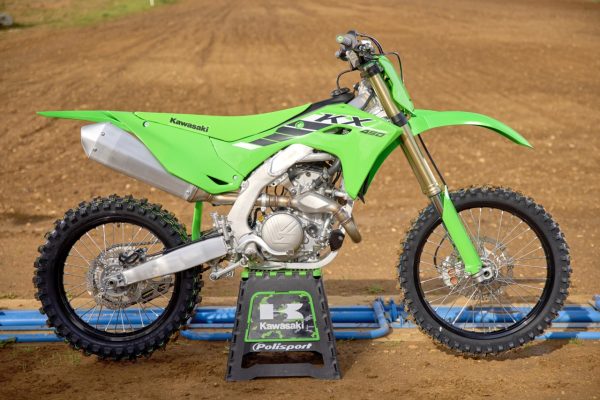
Testers take
Charlie White
“At first, the Kawi felt a bit off, but after a few laps, it settled in and cornered beautifully. The power wasn’t as aggressive but tracked well, especially in slippery conditions. A great all-around bike.”
Jeff Briggs
“The Kawasaki surprised me. It’s smooth, user-friendly, and offers excellent value. The suspension held up well, although a bit soft. Overall, it was comfortable with solid ergos and good brakes.”
Joel Rizzo
“The Kawi’s engine was a bit dull but smooth and predictable. It felt very level and tracked well through bumps and turns. Brakes were functional but didn’t stand out, and the clutch fluttered slightly.”
Beau Ralston
“Predictable power that allows for early roll-on in corners. Handling was smooth, and the ergos made cornering easy. It didn’t require much front-end searching, which I liked.”
Phillip Foster
“A well-rounded bike with map and traction control adjustments. The ’bar was a bit high for my preference, but the engine was smooth and had good balance.”
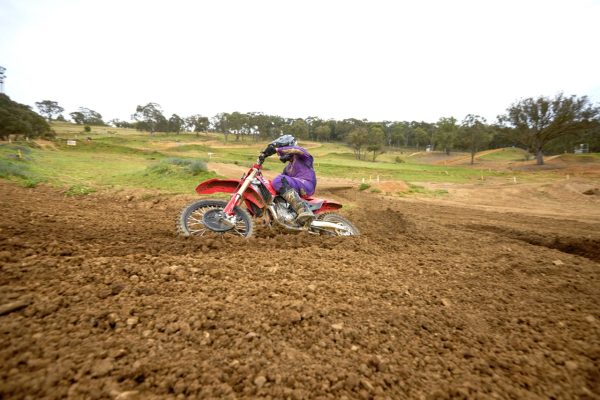
Honda CRF450R – Best package
The Honda CRF450R was the bike I was most eager to throw a leg over at our 450cc motocross shootout. With Honda sweeping every major motocross title in Australia – MX1, MX2, MX3, and Women’s WMX –not to mention Hunter and Jett Lawrence’s domination in the AMA Supercross and Motocross championships, it’s the epitome of “what wins on Sunday sells on Monday.” My anticipation was sky-high, expecting the bike to be nothing short of magical. The Honda didn’t let me down in our 450cc motocross shootout, but it also didn’t completely shock me. It stayed true to its reputation with excellent front-wheel traction, which Honda has always excelled at, and in 2025, it feels even sharper. The steep steering angle delivers an immediate response, almost as if the front wheel is riding right under you, providing that coveted direct feel through the ’bar and frame.
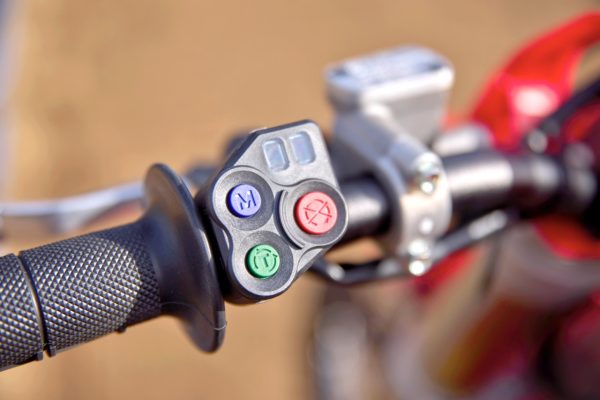
For 2025, Honda’s chassis refinements make the bike feel more compliant and stable, while still cornering exceptionally well. This CRF450R could practically turn on a dime. However, the suspension remains on the softer side, and our testers found themselves maxing out the compression clickers but still wanting more firmness. We experimented with different fork heights, ultimately finding the bike most stable and better at steering with the fork dropped through the clamps, keeping the front end in its highest position.
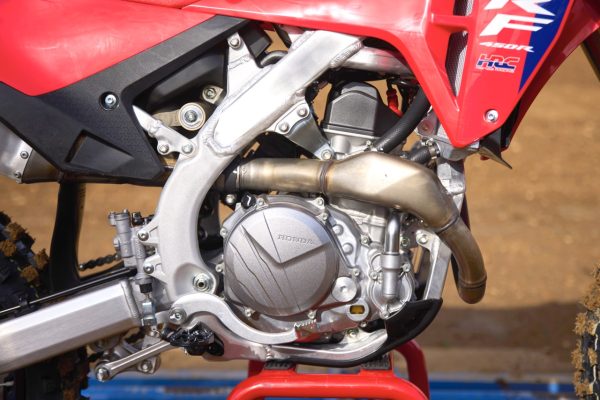
Honda also shines with its brakes, featuring a powerful 260mm Nissin disc in the front and a 240mm disc in the rear. The braking strength was so impressive that I found myself stopping far too early in corners on my first lap until I adjusted to their potency. The CRF450R’s kerb weight of 113kg allows these brakes to halt the bike confidently and quickly, providing a reassuring control that’s hard to beat.
Ergonomically, Honda nailed it. The CRF450R’s plastics are well-shaped, the ’bar has a comfortable bend, and the seat offers solid support. The one downside? The big, solid rubber grips, which not only look out of place but also feel about as comfortable as gripping an electric fence.
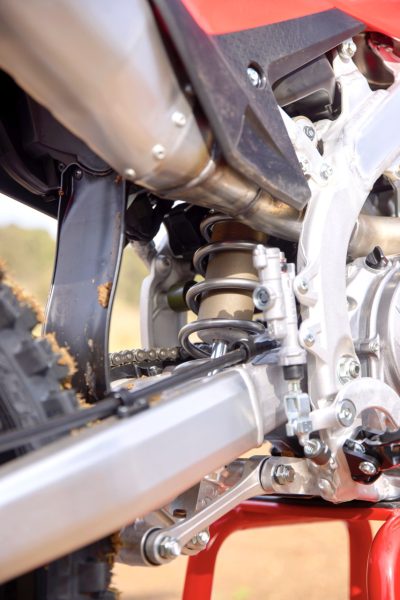
In the engine department, Honda made incremental improvements for 2025, yet it still leaves a little to be desired. The 449cc liquid-cooled, single-cylinder, 4-stroke engine with a 13.5:1 compression ratio feels slightly held back by the restrictive stock exhaust, which chokes airflow and prevents the engine from reaching its full potential. The engine’s sound hints at a willingness to rev, but the gases feel trapped, causing a slower power curve compared to the KTM and YZ450F. Although that restraint makes the Honda easier to handle, it lacks the punchier excitement found in those rival models. The map switch does offer a bit more aggression in the power delivery, but to fully open this engine up, a new exhaust would be essential.
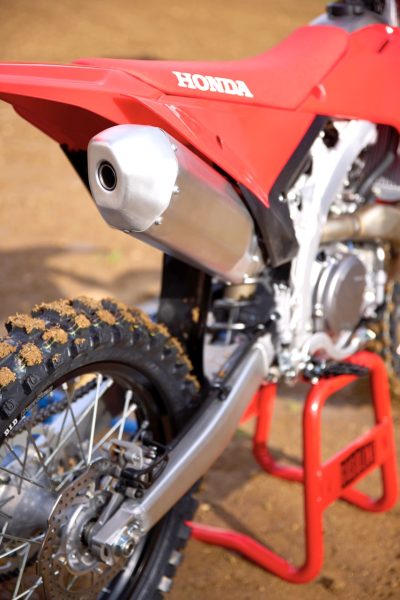
Honda’s five-speed transmission and chain drive deliver the power smoothly, but if I could get my hands on a CRF450R with revalved suspension and a more free-flowing exhaust, I think it would be hard to find any real faults in the bike. With a wheelbase of 1482mm and ground clearance of 333mm, Honda’s geometry combines agility with stability, providing riders with a balanced and comfortable experience. The CRF450R’s 6.3-litre fuel capacity is ample for extended sessions, and with an overall length of 2183mm, width of 827mm and seat height of 961mm, the bike feels spacious without being bulky.
In summary, the Honda CRF450R is a stellar performer, particularly in the handling and braking departments. For riders seeking a balanced, manageable power delivery and exceptional cornering, it’s a top contender. With a few aftermarket tweaks, though, this bike could truly come alive and showcase the legendary Honda magic in every ride.
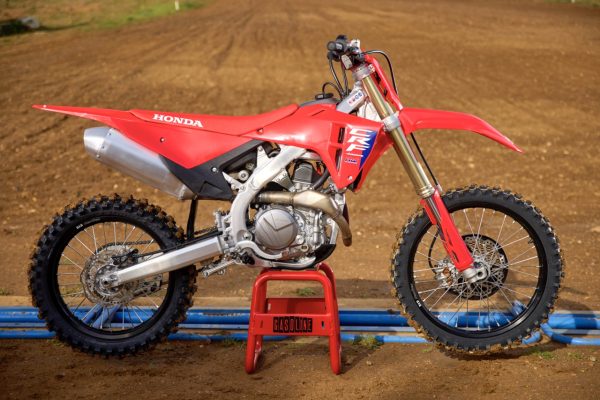
Testers take
Charlie White
“The Honda felt really planted, especially in straight-line ruts. Power, braking, and suspension were all strong, making it an impressive package overall.”
Jeff Briggs
“The engine was a bit underpowered for me, and the suspension was too soft. The Honda felt more like an enduro setup. That said, it had great grip, and the brakes were phenomenal – stopping power was the best in the bunch.”
Joel Rizzo
“Good power and stability in turns. The Honda felt higher in the rear, which suited the tight track conditions well. Easy to throw around, although the brakes felt average.”
Beau Ralston
“The Honda’s suspension was too soft, especially on downhills, but its handling and traction were excellent. The engine felt tame, making it an enjoyable, fun ride that handled naturally.”
Phillip Foster
“A great bike overall. I’d firm up the suspension to improve its performance, but it handled ruts and harsh bumps well.”
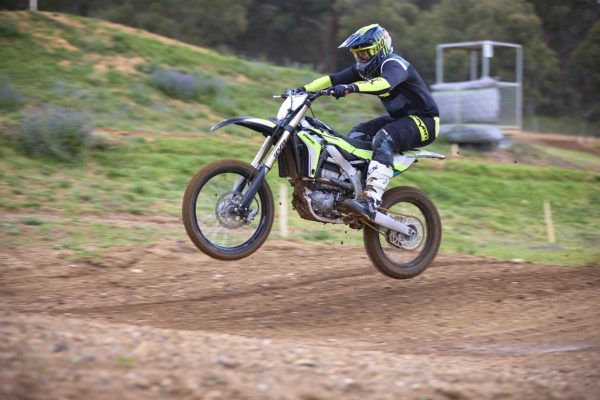
Fantic XXF 450 – Most powerful
Until recently, I had only seen the Fantic XXF 450 on screens, but my recent trips to Europe allowed me to witness this boutique brand in action. Watching the Fantic team battle it out at the FIM World Junior Championships, snagging podium spots, gave me a new appreciation for this Italian-made machine. Visually, the Fantic is striking, especially in its black and fluoro colour scheme. At a glance, it’s easy to overlook its Yamaha roots, but Fantic, an Italian manufacturer since 1968, has an agreement with Yamaha Motor Europe to use Yamaha platforms as the foundation for its MX bikes. This partnership enables Fantic to capitalise on Yamaha’s globally proven models while establishing its own identity in the off-road market.
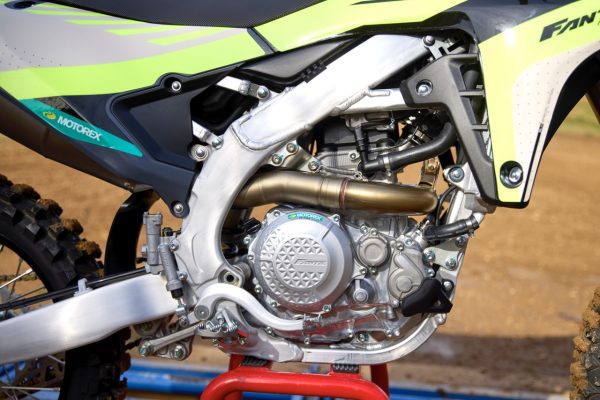
At its core, the Fantic XXF 450 starts as a Yamaha YZ450F, but it’s far from a simple rebadge. Fantic adds new, sharp-looking plastics, a redesigned seat, and an Arrow exhaust system, along with unique suspension tuning and a full GET ECU system with launch and traction control. The result? A bike that revs harder, faster and further than the Yamaha, which is no small feat considering the YZ450F’s already potent power. With a compression ratio of 13.0:1, the Fantic’s 450cc single-cylinder, liquid-cooled 4-stroke engine is tuned to deliver rapid, aggressive power, demanding precise clutch and throttle control. For those without these skills, the Fantic may be overwhelming. It’s as close as you’ll get to a factory racebike in a production model, offering a level of performance typically reserved for pro riders.
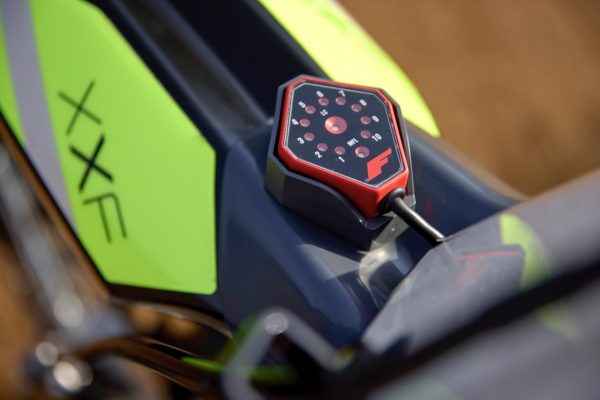
In handling, the Fantic retains Yamaha’s impressive characteristics. The aluminium perimeter frame provides a stable, balanced ride, with a caster angle of 26.9° and a trail of 120mm that help the bike feel planted yet agile. Fantic’s KYB suspension setup is firmer than on the Yamaha, with a 48mm fully adjustable front fork providing 310mm of travel and a fully adjustable rear KYB shock with 315mm of travel. While firm, the suspension remains smooth and forgiving, though like the Yamaha, the Fantic performs best with the fork lowered in the clamps to elevate the front, enhancing its steering and stability.
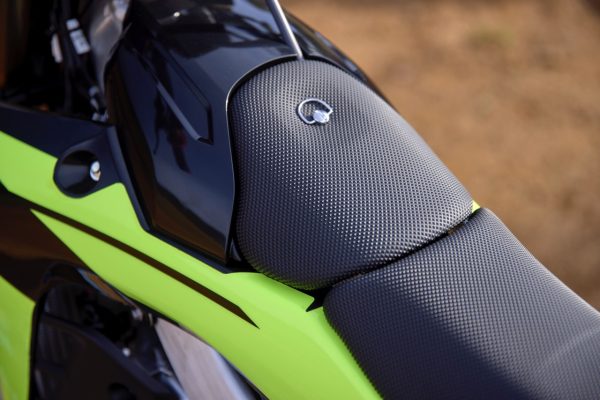
Braking is handled by hydraulic discs – a 270mm disc at the front and a 240mm at the rear – which provide ample stopping power to control the Fantic’s intense acceleration. Weighing in at 104kg wet, this bike is light and manoeuvrable, built for precise handling and aggressive riding. Ergonomically, the Fantic is well-suited to serious riders, though the hard, abrasive grips were the one downside. Swapping them out for softer lock-on grips would improve comfort without sacrificing control.
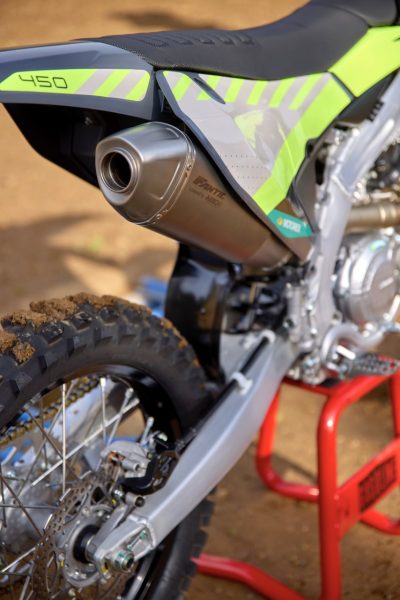
Dimension-wise, the Fantic XXF 450 is 2185mm in length, 825mm in width, and stands at 1285mm in height, with a seat height of 965mm and a wheelbase of 1480mm. The fuel tank has a 6.2-litre capacity, adequate for intense track sessions without frequent pit stops.
The Fantic XXF 450 was an exhilarating experience in our 450cc motocross shootout – this bike is pure race-bred power. Its high performance and boutique feel come at a price, but for those seeking a truly pro-level machine, the Fantic delivers. It’s a serious contender with factory-level refinement, ideal for riders who want the ultimate in power, handling, and precision.
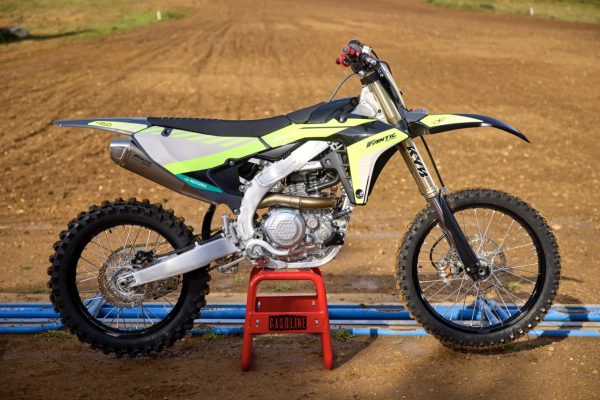
Testers take
Charlie White
“The Fantic felt like a race-ready factory bike with aggressive power, braking, and stability. It’s a thrill to ride but definitely built for pro-level performance.”
Jeff Briggs
“An animal of a engine with strong power throughout. The suspension was firm and race-ready, similar to a Yamaha but slightly stiffer. Ergos were close to the Yamaha but with minor differences.”
Joel Rizzo
“Punchy and aggressive, but still connected. Suspension was firm, which suited today’s track conditions. Brakes were solid, but the rear felt harsher than the Yamaha.”
Beau Ralston
“Powerful, linear engine that felt very controlled. Suspension wasn’t as planted as the Yamaha, but the handling was sharp. Overall, it’s the closest thing to a factory bike I’ve experienced.”
Phillip Foster
“Unbelievably fast with a lot of top-end power. Only issue was the exhaust’s positioning, which pushed my boot out slightly. A punchy, powerful ride overall.”
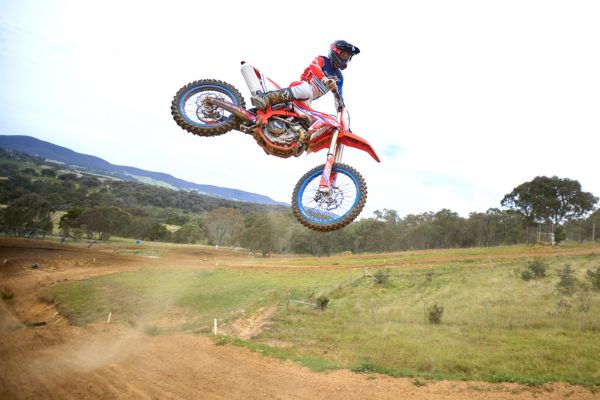
Beta RX 450 – Best looking bike
The Beta RX 450 is a relatively fresh face in the motocross world, especially to a 450cc motocross shootout but it’s already gaining traction. Although Beta’s motocross lineup has only been around for a little over a year, this bike has already made a name for itself, competing on the global stage in MXGP and AMA Supercross, where it’s consistently achieved respectable results. Far from being a reworked enduro model, the RX 450 is a purpose-built motocross machine, with its frame, engine and suspension all specifically designed for the demands of motocross. Even the clutch, gearbox and crankshaft have been re-engineered to deliver performance in MX environments, highlighting Beta’s commitment to building a dedicated motocross bike.
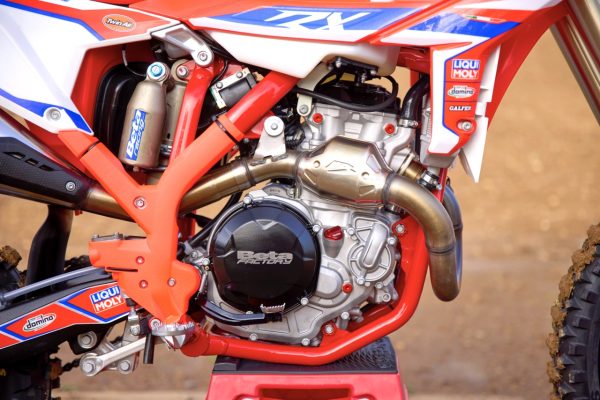
The RX 450’s engine is a completely Beta-designed and built single-cylinder, liquid-cooled, 4-stroke powerhouse, displacing 449.3cc with a bore of 97mm and a stroke of 60.8mm. With a compression ratio of 13.5:1, this engine delivers a smooth and mellow power delivery that builds steadily, making it well-suited for newer or returning riders. The fuel system is managed by a 46mm Elldor throttle body, providing responsive yet approachable power. The power output won’t overwhelm you but is still satisfying, offering plenty of pull for those seeking manageable performance. Equipped with an AC Kokusan Digital CDI ignition and a wet multi-disc clutch, this setup ensures reliable operation and predictable power delivery.
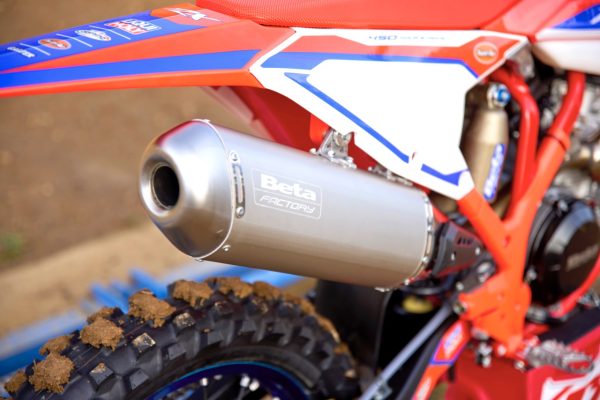
Beta hasn’t skimped on braking or suspension components, either. The RX 450 is fitted with Nissin brakes – 260mm wave disc in the front with a double-piston floating caliper and a 240mm wave disc in the rear with a single-piston caliper. This setup provides strong, reliable stopping power for handling the track’s toughest sections. The KYB suspension system, featuring a 48mm closed-cartridge front fork with 305mm of travel and a 50mm body rear shock with 300mm of travel, is set up with comfort in mind, offering a plush and forgiving feel while still maintaining good hold-up in the stroke. This makes it an excellent choice for entry-level 450 riders who need a bike that’s easy to handle without sacrificing control.
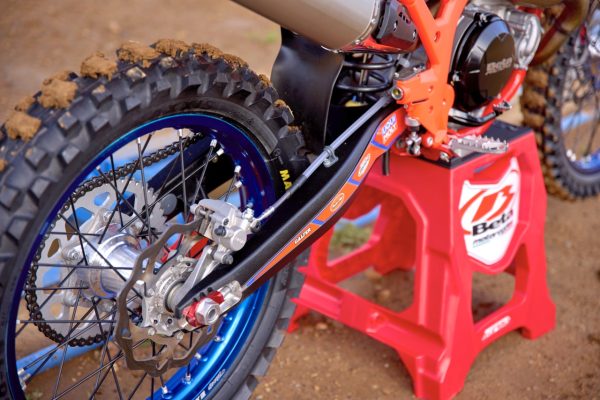
Handling-wise, the Beta RX 450 sports a molybdenum steel double-cradle frame that splits above the exhaust port, creating a stable and comfortable ride. It also features a 1485 mm wheelbase and a ground clearance of 335mm, which provides solid stability and room to manoeuvre. The bike’s dimensions – 2170 mm in length, 825mm in width, and a height of 1270mm with a seat height of 945mm – make it accessible for riders of various sizes while offering ample room to move around on the bike.
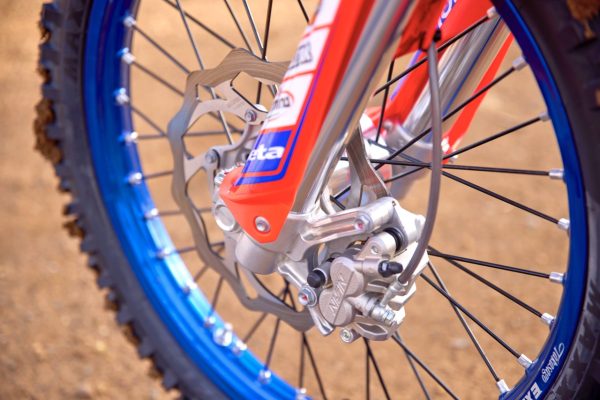
Weighing in at 104.5kg dry, the RX 450 is relatively light for the class, making it a manageable machine, especially for novice riders or those returning to the sport after time off. The 7.0-litre fuel tank, with an additional 1.4-litre reserve, allows for decent track time without frequent stops. While pro riders may seek to stiffen the suspension and squeeze more power out of the engine, the Beta RX 450 is perfect for vet riders or those looking for a bike with a comfortable, friendly feel that’s easy to ride.
In summary, the Beta RX 450 is a standout choice for anyone wanting a softer, more manageable 450 that still delivers a genuine motocross experience. With a few more years of development, Beta could easily position itself as a fierce competitor in the motocross segment. For now, it has created a unique, versatile bike that’s accessible to a wide range of riders and stands as an impressive achievement for only two years in the motocross scene.
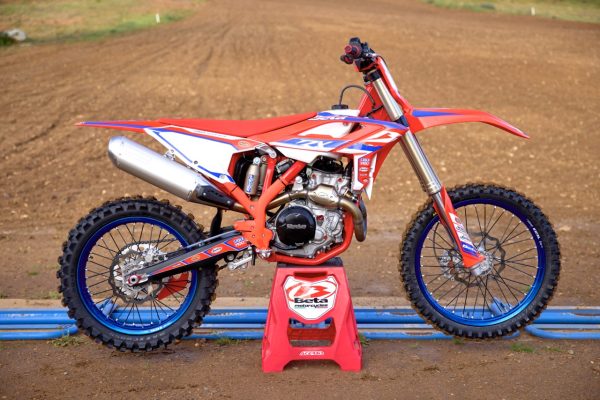
Testers take
Charlie White
“The Beta had a softer power that reminded me of a 250. It sat a bit low in ruts but had good brakes and control. Unique feel but comfortable.”
Jeff Briggs
“Surprisingly solid handling, with a smooth, tractable motor. The Beta turned well, and the KYB suspension held up nicely. Ergos were comfortable, though the seat was a bit hard.”
Joel Rizzo
“Handled well, though the engine was more moderate in power. Suspension held up but needed some feel adjustments. Overall, a stable ride.”
Beau Ralston
“The Beta was very stable and planted. The engine was controllable and easy to handle, making it ideal for a rider like me who doesn’t ride as much. The only downside was the ergos around the shroud, which felt wide.”
Phillip Foster
“The Beta wasn’t ideal for my taller frame as the footpegs felt high. Top-end power was nice, though, and it levelled out well on jumps.”
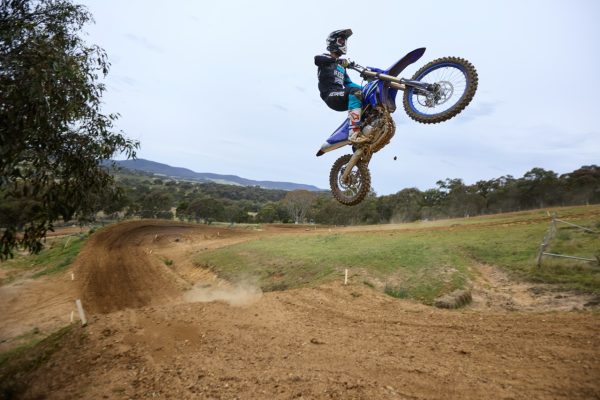
Winner!
The winner of our 2025 450cc Motocross Shootout is the Yamaha YZ450F! We know, you probably saw this coming after reading the feature. The Yamaha didn’t just win our 450cc motocross shootout; it dominated, securing the top spot with unanimous high scores across the board. There’s simply no disputing the champ. The Yamaha excels in every department, making it the bike to beat. It’s the only bike that scored an A in every category.
Now, let’s be real: if we were allowing upgrades, maybe one of those other bikes with firmer suspension and an upgraded pipe could take on the Yamaha. But that’s not what we’re doing here. This is about stock bikes, judged as they roll out of the dealership, and in that realm, Yamaha takes the crown.
For the first time ever, there was no bike that let down any tester in the 2025 450cc motocross shootout. Sure some testers preferred one bike over the other but no one walked away hating a bike. And every bike in this group suits a different rider, with the excpetion of the Fantic which unsurprisingly suits the same expert-level rder the Yamaha does.
The KTM was at the pointy end thanks to it’s motor, rideability and exceptinal finish. The overall package from KTM is exceptional with the Husqvarna just behind it. Honda and Kawasaki then duked it out for best handling rights. Honda’s CRF450R has remarkable handling and cornering abilities. But, somewhat softer suspension and a slightly muted engine held it back.
If you’ve read this 450cc motocross shootout you won’t be surprised to learn the Kawasaki KX450 almost topped the Steering. While the Kawasaki’s suspension is on the softer side and the power delivery lacks some low-end punch, this bike steers on rails. In the 450 class, it’s not just about brute horsepower; cornering and handling carry the day.

The GASGAS and Beta were the most forgiving bikes to ride. They are perfect for someone that doesn’t want an aggressive engine and firm suspension. If you’re a clubman, older bloke or someone who can’t ride weekly, these two will suit.
Now, you might be wondering, “If the Fantic XXF 450 is essentially a faster Yamaha, why didn’t it win?” Good question! While it almost did, thanks to an exceptional score in engine performance, it fell a bit short on suspension. Yamaha’s new linkage and updated internal suspension settings in the 2025 model made it a touch more refined, while the Fantic, though thrilling, felt stiffer and less forgiving. Let it be known, though: if it were up to me, I’d bump the Fantic up because that power is addictive! The KTM would be second with the Honda in third. But these results are based on collective scores, not just my own opinion and some of our testers for this shootout don’t ride at my evel or weight the same as me.
With our lowest-scoring bike averaging 4.84 and our winner averaging 7.93 in the 450cc motocross shootout, the Yamaha is undisputed Champ. But with Ducati and Triumph joining the mix next year, things could be different.
So here’s to the Yamaha YZ450F, the champ of our 2025 450cc motocross shootout. But rest assured, in a field this good, every bike has something to offer. We can’t wait for next year
